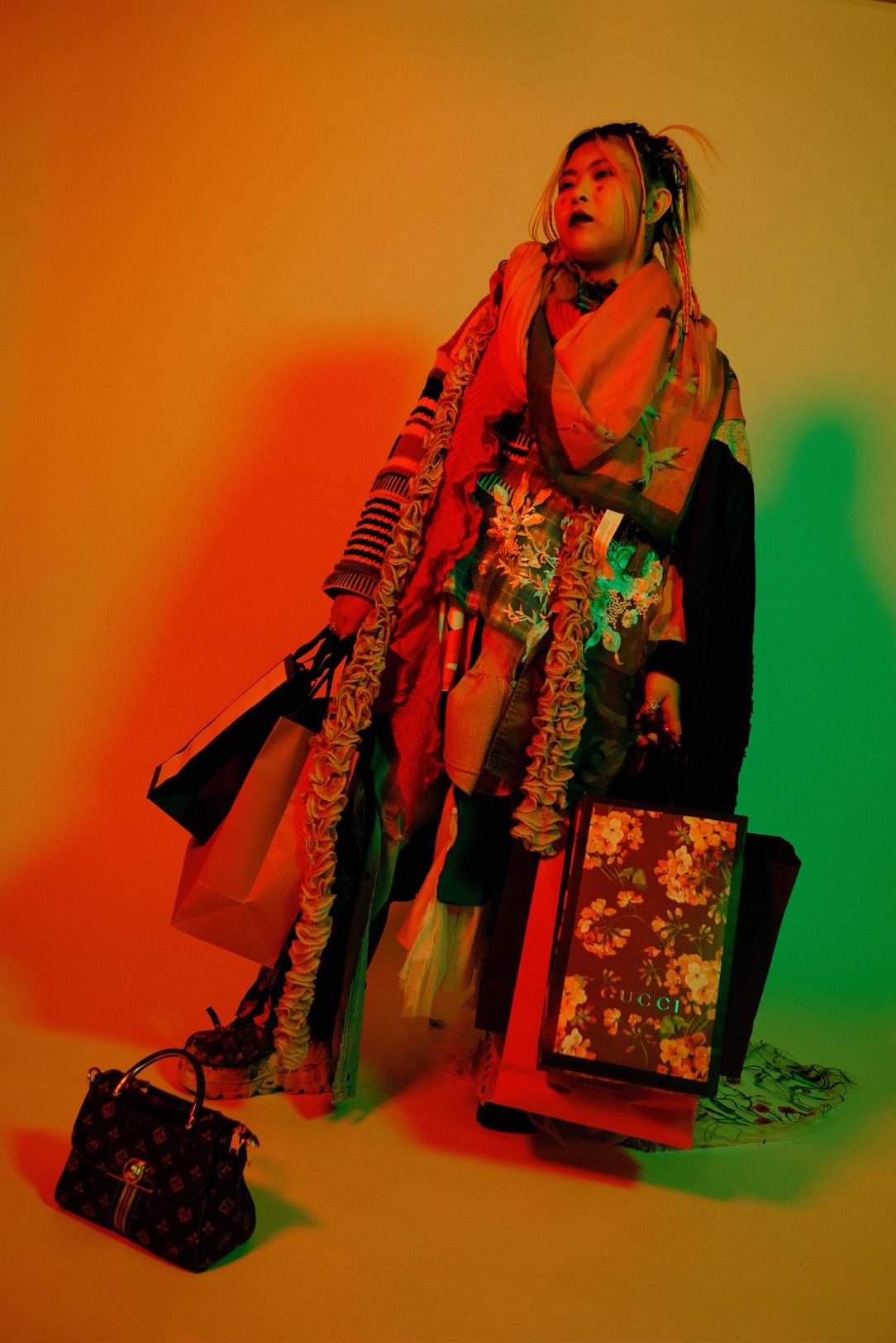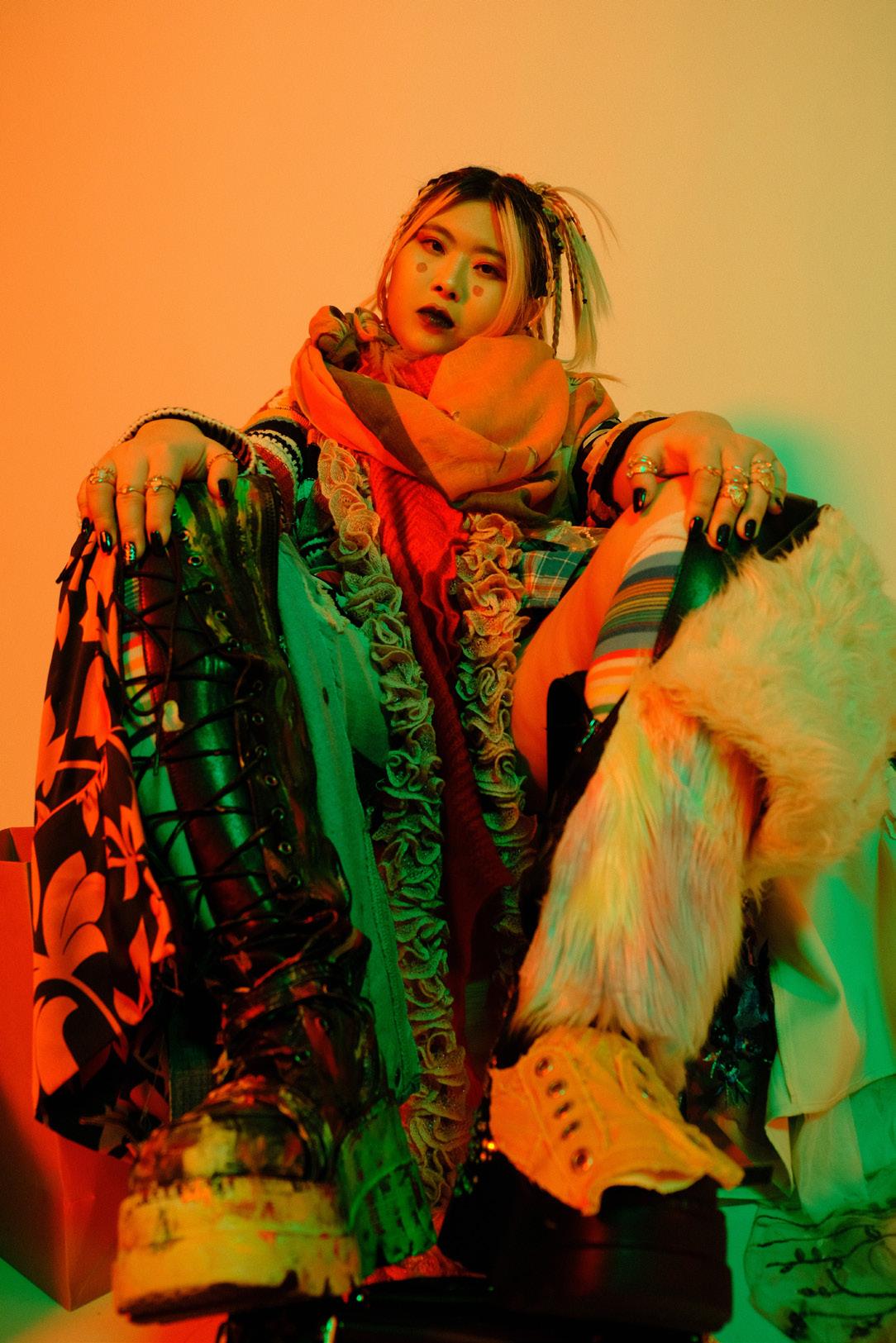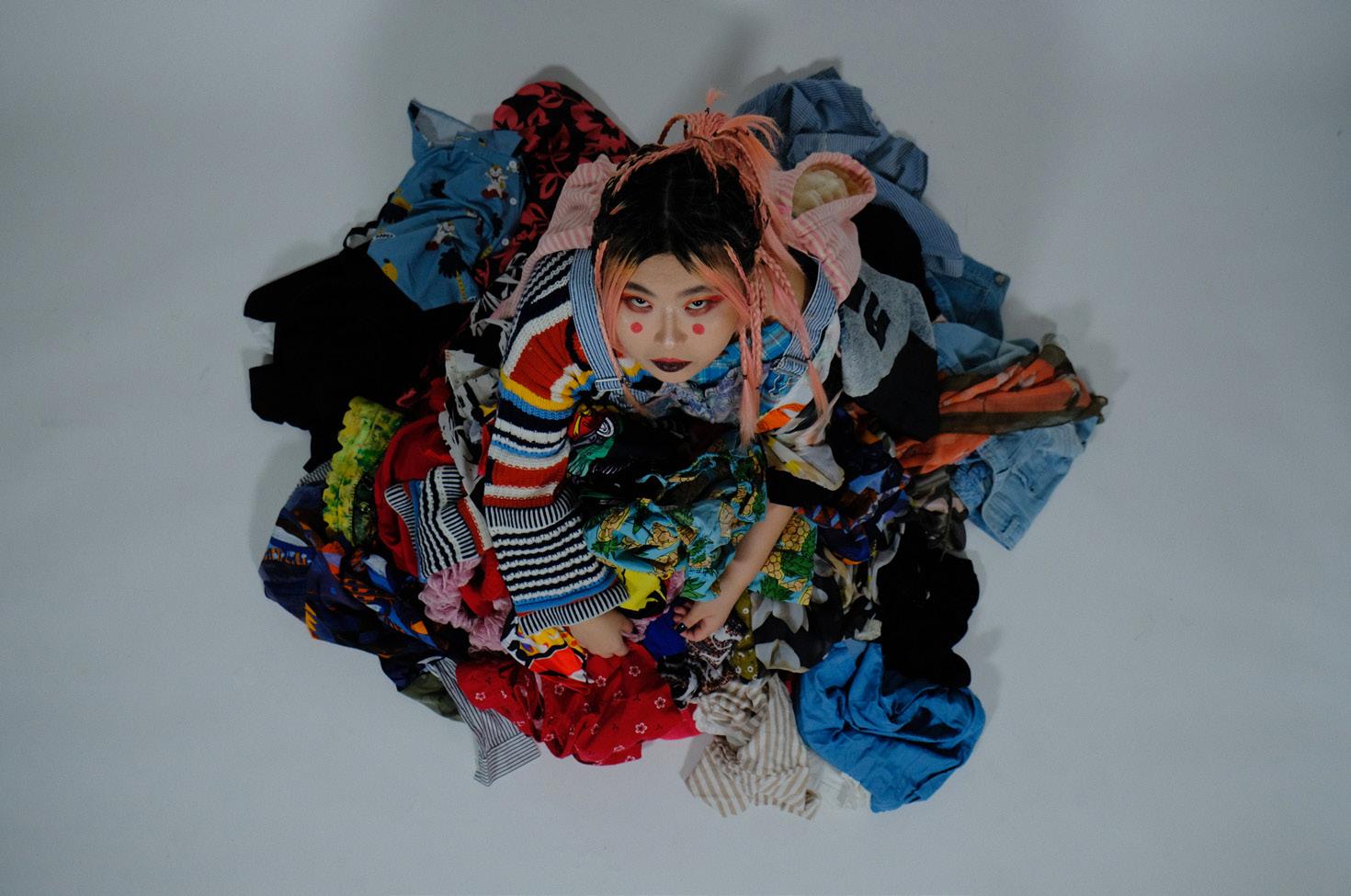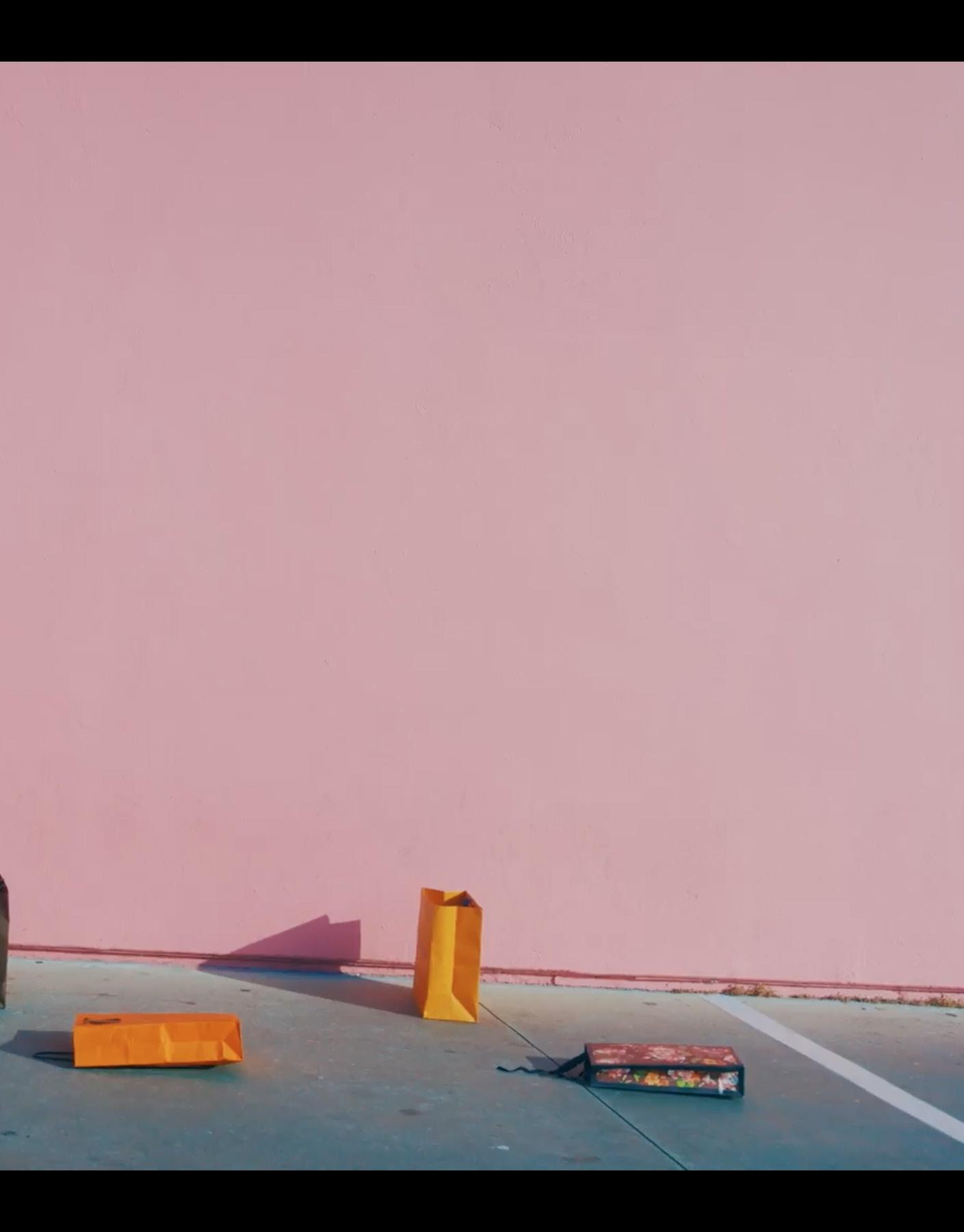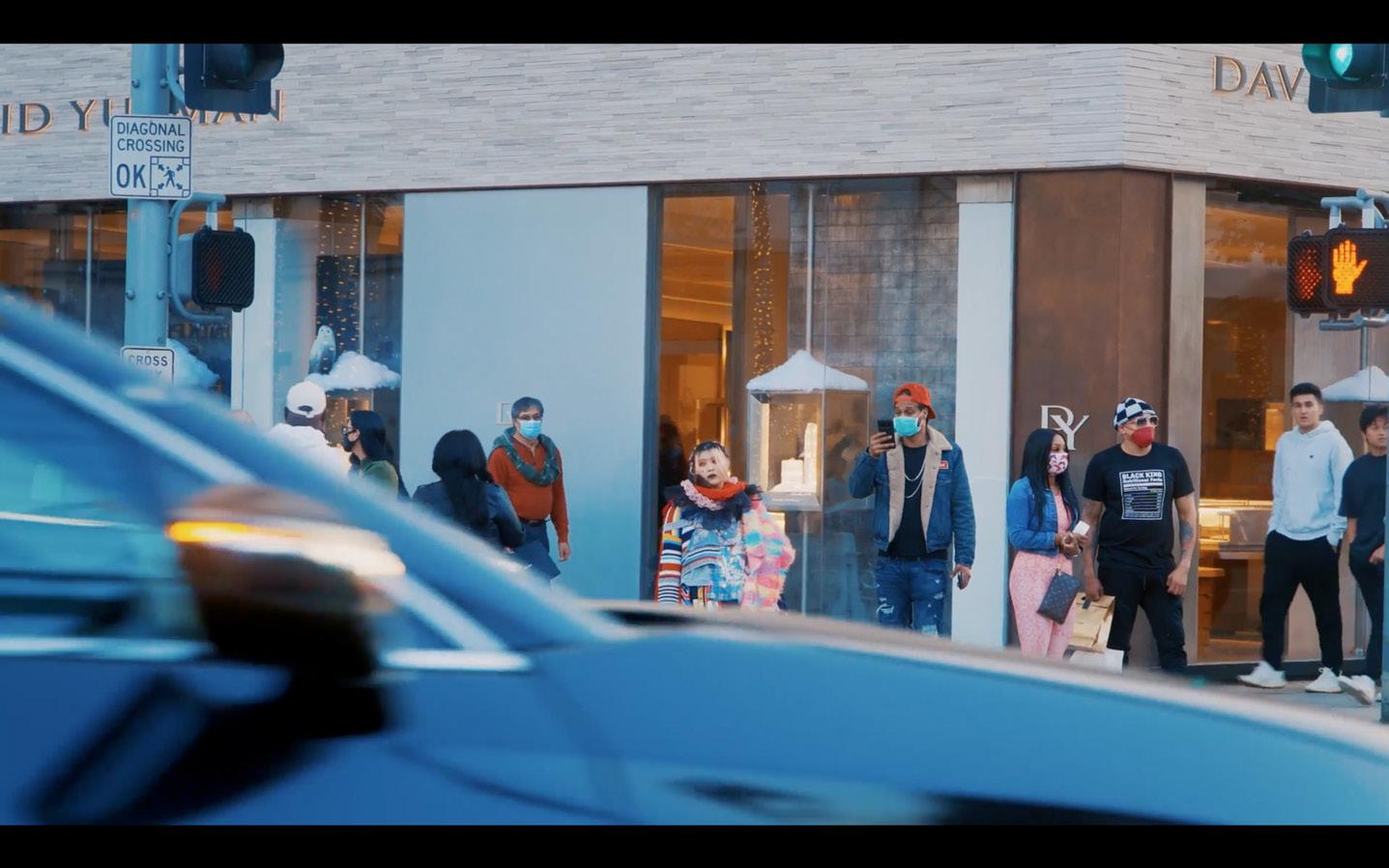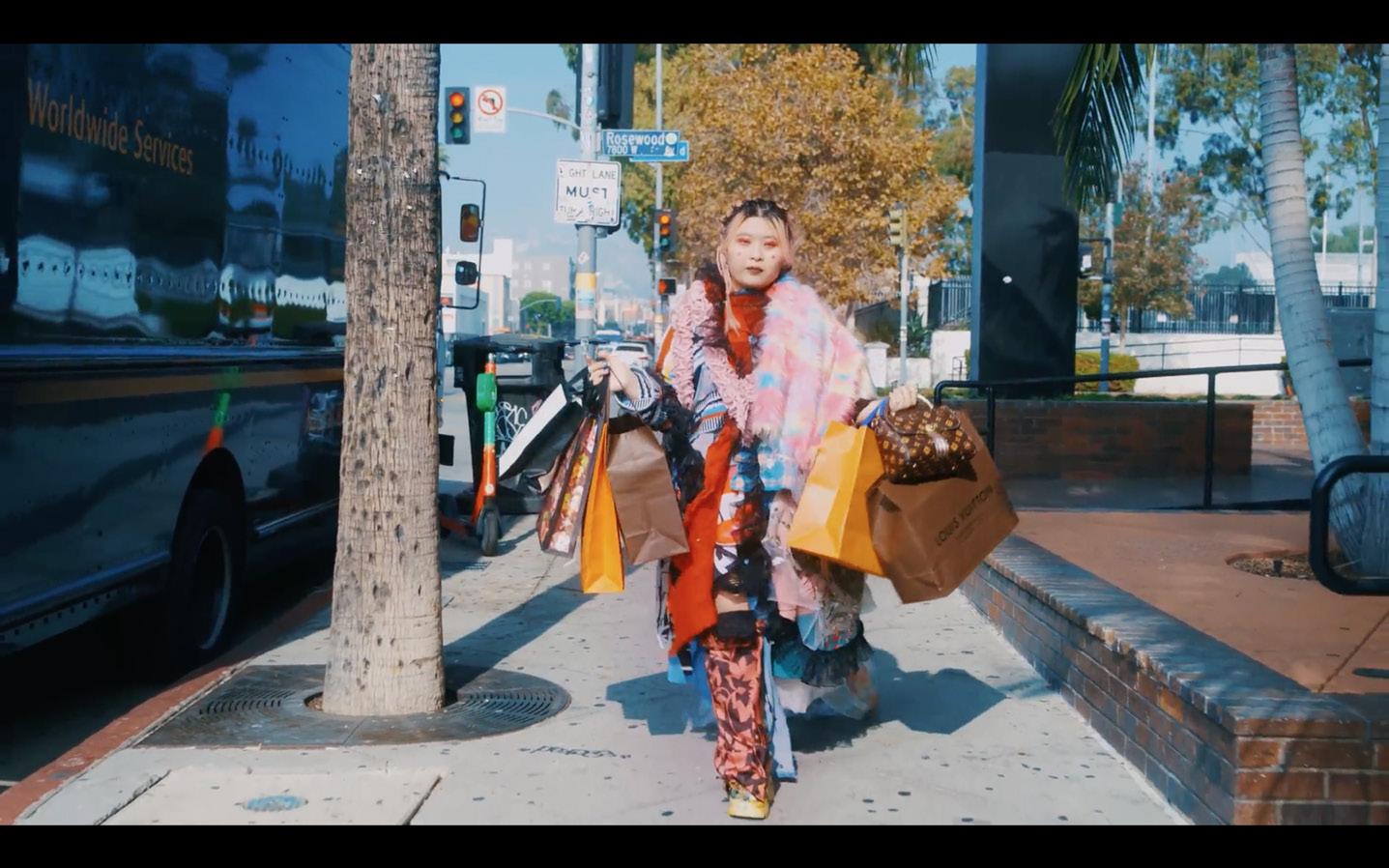UNCOMPROMISING, SUSTAINABLE, AUTHENTIC.
26, APRIL, 2022
CANDID CONVERSATIONS WITH VANESSA AND DYLAN OF DRAGON FRUIT SKINCARE.

INTERVIEW BY REBECCA USTRELL, TRANSCRIBED BY SAMUEL SIGNER
DIGITAL AND FILM PHOTOGRAPHY BY REBECCA USTRELL
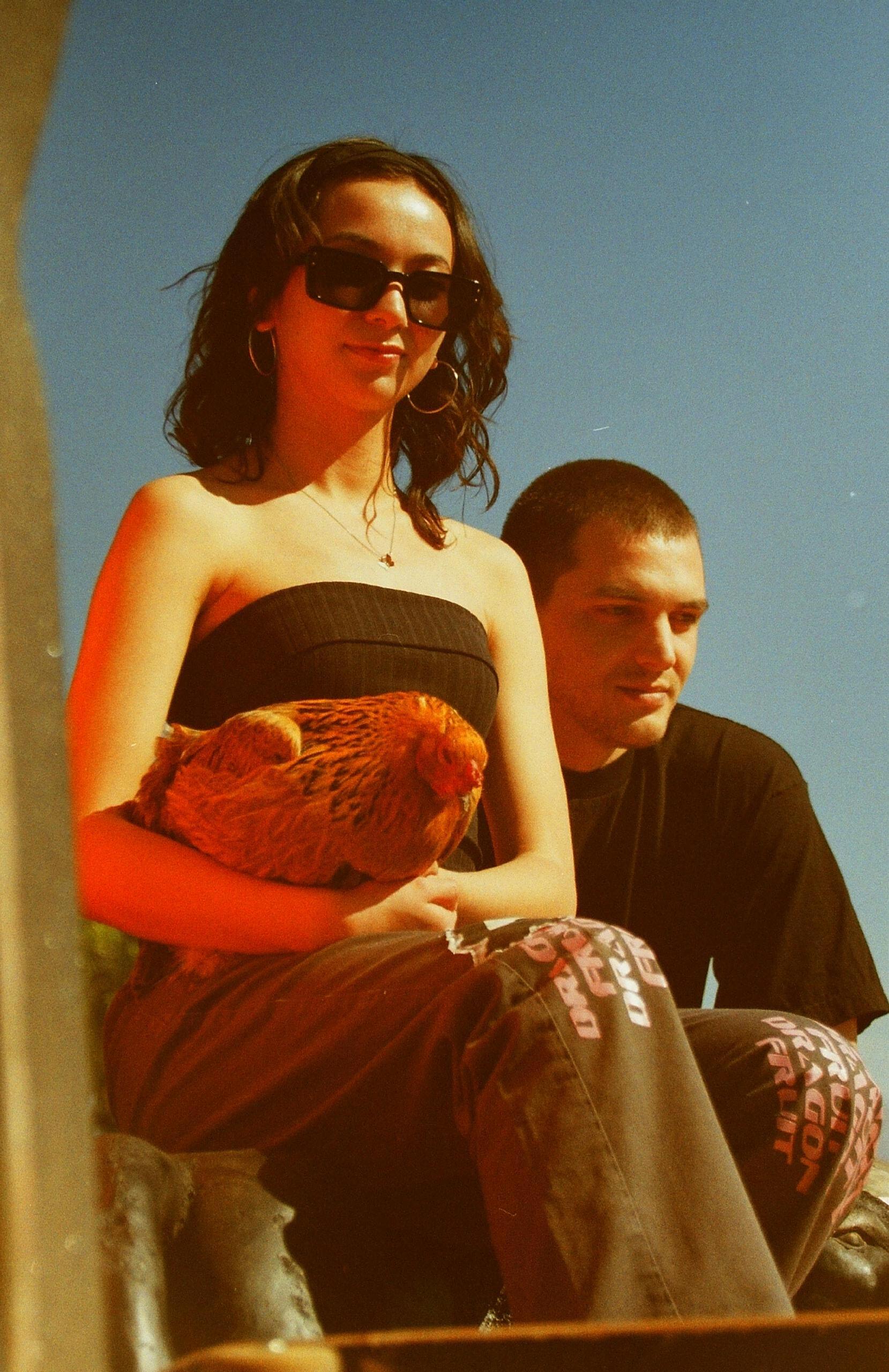
AT DFSC STUDIO, ONTARIO CALIF.
Rebecca: Okay, so what I really want to talk about first is the meaning of the brand and how it started. Like, what’s your origin story?
So to start it off, what year did you first start working towards Dragon Fruit Skin Care?
Vanessa: It was 2017, we were living in Pasadena, and yeah, I was having skin issues.
And I was with a skincare company and the beauty industry was something I always knew about because of school– like, I studied geography. I just knew it was bad, but hadn’t really transitioned… y’know like, when you know something is bad but haven’t done- [lol]
Rebecca: So how did you know that from studying geography?
Vanessa: Plastics.
Rebecca: Right.
Vanessa: Yeah, a lot of the focus in my geography courses were on environmental pollution and industries. And one of them was the beauty industry. I don’t know, it scared me because I didn’t know and I always loved skin care so I was like, “what?”

And at that time, I was also transitioning to veganism. And trying to find vegan skincare and it was so expensive, it was ridiculous. It was like $60 or $80 to get an organic serum.
Rebecca: Yeah, I buy stuff. And I try to make it as environmentally friendly as
possible, and it’s always base $45 for a tiny thing [lol].
Vanessa: The margins are crazy; so I just started making my own… looking into the oils, just experimenting.
Rebecca: So your first attempts at making products was for yourself.
Vanessa: Yeah. And then slowly, I would give it to my sister, then my mom, and then my friends– and they liked it, so I got excited.
At the time, my sister worked at a hotel and had really bad acne. The serums really helped her; and then people started asking her, then she told them about my stuff, I gave them samples, they liked it and wanted to buy it, they asked me what the name was, and I was like, “umm” [hahaha]
I was like, “I don’t know!” And they asked me, “how much?”, so I guess they started pushing.
Rebecca: There was demand… that you didn’t know about.
Vanessa: Yeah! A little bit... But yeah.
Rebecca: That’s cool. I feel like I have a similar thing: I did something once and then everyone wanted it again, so I was like, “alright” [hahaha]. I felt kind of bad and obligated… so like, what was your first product? How did you learn how to make it?
Vanessa: The serums. ‘Luna’ and ‘Lupita’ serums were my first. I just started researching about the botanical oils and clean, vegan skincare. And it’s honestly really simple.
Rebecca: So how did you make your first ever product? Could you walk me through it?
Vanessa: I just ordered the oils I was interested in, and researched tutorials and what other people have been experimenting with. And a lot of them weren’t vegan; I just veganized them.
Like, what can I substitute? The waxes, the butters, etc. So literally, just experimenting… on myself. And it was fun, it’s all natural, so I wasn’t too weirded out… y’know?
Rebecca: You weren’t worried you were gonna, like, burn yourself. [hahaha]
Vanessa: Even though you can. [haha]
Rebecca: Oh shit [lol]. I feel like that’s tricky with chemicals.
Vanessa: But yeah, I just had fun with it. It started as just a hobby, and the essential oils– they smell so good, I feel like they really helped me.
Rebecca: Would you say that you were also interested in the process and experience?
Vanessa: Just being around those plants… they’re just so rare, and they are expensive. Like, shea butter comes from Africa, and the process is crazy. Just being around all that, and I have so much of it because I buy in bulk [lol], I have fun and I appreciate it; the textures, the scents…
Dylan: We are lucky to be able to have, like [lol]… modern day humans have access to all this crazy, pure oils from all over the world basically.
Rebecca: Cool. So we kind of touched on why it’s important that your brand is sustainable, but how do you make sure it’s sustainable? I know that’s kind of a big question, but… When you’re creating something, what do you have in mind? From start, to packaging, to everything.
Vanessa: I definitely hate plastic and the global trash problem, so I try to minimize plastic by using glass and encourage reuse; a lot of people I know and friends that buy from my products do reuse the jars.
We used to have vinyl labels originally. They were so nice, and they were also waterproof, but vinyl is pretty much plastic, so I was like, “we need to stop.”
So what we use now is recycled paper. It hurts my feelings sometimes that the labels get dirty easily now using paper, but I’m like, “I can’t.” It’s not environmentally friendly to have such a beautiful label.
Rebecca: I mean, I think that they look great,
Vanessa: Thank you. [lol]
Rebecca: But I’m pretty good at not getting them wet and having them get dirty. I had to learn that. [haha]
Vanessa: Yeah, I just noticed that every other skincare brand, their packaging is…
Dylan: It’s plastic. [lol]
Vanessa: But it’s perfect!
Rebecca: It’s for the vibrancy, and the cleaness–
Vanessa: It’s going to look good. But with time, our products… the labels age.
Rebecca: Do you feel the pressure of conforming to the aesthetic of the industry? How does that make you feel?
Vanessa: In the beginning, I felt pretty insecure about that… even about my branding…
Dylan: Most skincare brands use co-
packers; they do all the packaging and the manufacturing for you, even if you’re a small brand. And from what I’ve learned, copackers are always on the side of efficiency. They just don’t give a crap [lol]... If they could use a chemical that could extend the shelf life, or to make the manufacturing process easier, they’ll just use it. And they’ll recommend it to the company owner coming to them.
Rebecca: Like they’ll say, “add this filler because it’ll flow better through our pipe.” [lol]
Dylan: Yeah, it’s always about that with them… and that’s what most companies do. So for us, we’re making everything handmade. It just doesn’t morally align with us to use plastics, chemicals… like when I researched PVC, that it’s basically the worst thing and disintegrates into your soil or water, I was like, “dude, we cannot use these labels anymore even though they look clean and super nice…” I felt bad when we were putting them on. [haha]
Vanessa: It felt fake for a while, because we’ve always had our branding-
Dylan: Saying we’re all “Eco”, but here’s our bottle that has like…
Rebecca: I feel like it’s not that fair to put that much pressure on yourself. Like, “Okay, I live in California, in the United States; I can only avoid so much.”
I think that as long as you’re able to take the conscious step to make a different decision, then you’re doing so much. But if you’re actively being a detriment to the environment, and you know it? Then I guess that’s a good time to question yourself.
And I definitely feel that. When people request certain paper stock, I’m like, “... you really want me to UV coat these books for you?” It’s literally just plastic. But then I’ll go
and do an environmental magazine issue [lol]. Stuff like that… so I definitely know how you feel.
Vanessa: Yeah, you just have to check yourself, and I feel like we could always do better. And no one is perfect, but… as long as you try.
Rebecca: So what would you say are big red flags? Like, if you were to recommend to someone their first steps to being more environmentally-conscious about their beauty products, what are some things to stay away from?
Vanessa: “Fragrance” is one of the worst terms ever. It’s an umbrella term usually meaning that there are a bunch of chemicals added to the product– it’s a well known trade secret. That’s one of the biggest and most common red flags…
Dylan: Also if they’re not using any natural ingredients, natural oils, extracts–

Vanessa: Any ingredient that’s name looks awkward or is hard to pronounce, look that shit up. It’s suspicious. Or even when a product has too many ingredients; less ingredients is usually cleaner. Usually [haha]. I like to encourage people: if you don’t know what it is– Google it; everyone’s skin is different.
Rebecca: If someone were to ask, “What is Dragon Fruit Skincare”, what would you say is the mission of the brand?
Vanessa: Definitely to highlight plantbased skincare; that you don’t need to be using animal products for your beauty routine. But I also think we’re a creative hub since we like to highlight artists. My goal is to be an educational platform as well; highlighting environmental issues, doing some fundraising, etc.
Rebecca: What are some highlights in either art or fundraising that you’re really stoked about?
Vanessa: Our first day that we opened for the August 2021 Ontario Art Walk, we did a fundraiser for Growing Roots, a community group in Pomona. We raised a good amount of money that day.
Rebecca: How much did you raise?
Vanessa: Over $100. I invited small businesses; I didn’t charge them. I just asked that they donate a percentage of their earnings to the fund. It was a lot of fun, and I felt everyone felt good about it. I want to do more things like that.

Rebecca: And why do you personally feel it’s important art and artists with your platform?
Dylan: For me, not only is the art all local and from our community, but the art also ties everything together and brings a lot of people in. Art evokes emotion, so when you get people thinking, and you bring those people together into one space… there’s a lot of brain power going on. [haha]
Vanessa: I think artists are undervalued and not given enough support. As a young person in high school, I was really into art, so… I don’t know, it’s really nice to be able to do this now; it’s something I’ve always just fantasized about. I’m very thankful that I’m able to give artists a platform, because it’s hard being an artist. It just is.
Rebecca: That’s like the understatement of… my life. [haha] It’s super hard to get anyone to care.
Dylan: When I was younger, and going to the art walks in Pomona, it just seemed unattainable to get on a gallery wall. And I like that we’re able to just…
I feel that we’re pretty open– we’ll take anyone. We try to get the word out for artist submissions; whoevers down to show their work, we’re down to show it too. [lol]
Vanessa: Yeah. We haven’t had any experiences with an artist that has been negative… But maybe we’re just new to this.
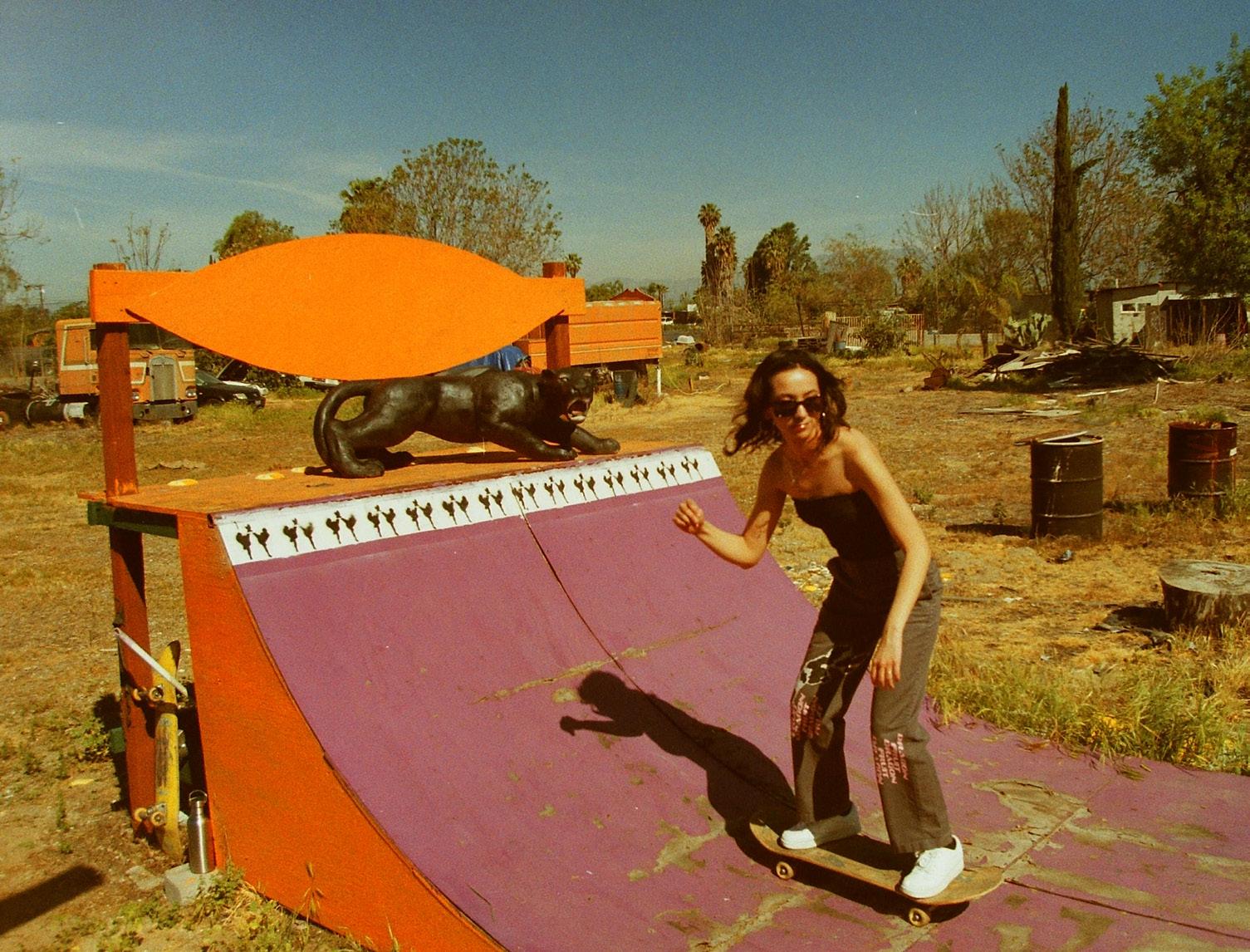

Rebecca: So I’d like to talk about your branding, your color palate. Because I feel that when I think about Dragon Fruit Skin Care, I think of a story. I’ll just give you my opinion. [haha]
It feels very California. It feels nostalgic, youthful. For me, it reminds me of when I was living in the High Desert; chilling, hanging out on the loading dock with skaters. [haha] Just like, being the chick that didn’t know how to skate, but just hanging out with everyone because I liked the music they were into, there was a lot of open conversation– there was really not that much judgment. Maybe someone was smoking, and they were way too young– but no one really cares [lol] because you’re just having a good time. For me, it’s this whole emotion; it’s very carefree.
Your branding also reminds me of PlayStation 1 [haha], specifically fighting games. It’s a combination of a lot of things, and I think it’s literally because of that poster design you have.
So I want to know about the inspiration behind the imagery and the color palate you use.
Vanessa: Skincare has always been a hobby, but originally, I was working on a comic book. It was about these “STAR BBS”, or “Starbabies”, and they were tough. They would fight to protect Earth, they were very sustainable– I wanted it to be educational.
And I kind of stopped, but I started slowly incorporating the ideas from the comic. It was actually an accident: Dylan and I were working on our first label, and he just put one of my first drawings on the labels, the “Luna Girls”, for fun. It just happened to be one of the few design assets I had, but I really
liked it and decided we were just going to combine the two.
Rebecca: So they’re characters from your original comic book idea called, “Starbabies”?
Vanessa: Yeah, and then we were super into Kung-Fu and self-defense for a while, so.
Dylan: We were taking Kung Fu classes in Pasadena. We were really going hard. [lol]
Vanessa: We were like, fighting each other all the time; we had sticks, it was crazy [hahaha].
Actually, when we were living in Pasadena, I feel like I had a traumatizing experience:
Dylan had work, and I was just skating one day around 2pm. It’s a commuter neighborhood, so most people leave early and aren’t back home until around 7pm. I was headed to school at Pasadena City College, and then these two guys started screaming at me–and chasing me! Literally.
Rebecca: Oh my god.
Vanessa: I had my skateboard but I was walking, and they were like, “skateboard!”, but all aggressive and walking at me fast. Luckily, I was two blocks from college and it was a school day, so I just stayed on campus all day until Dylan could pick me up after work. I didn’t want to go home because I was scared they’d find out where I lived since we lived right there.
Rebecca: At this point, you knew Kung Fu? Or was this right before?
Vanessa: Not yet. So after that, I was really scared to be out by myself. Like, I would have to wait for Dylan to pick me up, and I hated that. But there was a Kung Fu studio, so… we [haha] fucking took some lessons; Kung Fu and Tai Chi.
[haha]
It was very empowering. Like, I wasn’t scared anymore; it was crazy, even though I probably should be. [haha] I feel women especially need that… but even just humans in general. We need to protect ourselves and have that knowledge. I feel as modern humans, we kind of lost that and don’t really have that sense of survival.
And honestly, whatever happened to me wasn’t that intense, but the impact it had on me was enough. Like, imagine if they actually got me, actually hurt me.
Rebecca: I know that feeling. Having that false sense of safety, constantly… I’m also into fighting but I don’t fight; I just like watching it. [haha] I mean, I can probably pretend to fight, I could probably defend myself–
Sam: You kick really high.
Rebecca: [hahaha] I pretend to fight Sam all the time. I’ll just be like–
Sam: Her kicks can reach my face. [haha]
Vanessa: One of our teachers, what was he in, the Marines?
Dylan: Green Berets.
Vanessa: Yeah he was in the military, he was bad ass. And he was crazy. His instincts… he was so fast, it was insane. Since he was in the military, he would bring up or demonstrate these physical scenarios I could never even think of.
He also talked about how society was about to collapse, so. [hahaha] Maybe he was a little traumatized too… But I think it’s amazing he channeled it into sharing his gift of selfdefense knowledge.
Rebecca: I think it’s really cool when people can do that, and channel their
experiences to teach others. But you gotta watch out, because maybe they’re telling you some crazy shit too, [haha]
Vanessa: He would! [haha] He actually got blown up, and that’s why he got sent back, like he had to go through a lot of physical therapy. It’s crazy because he still looks good, he can still do everything… but he’s in pain, so yeah… aw, we should reach out to him.
Rebecca: You should! [lol]
Circling back, have you ever had a chance to share the full background story about your branding before?
Vanessa: Yeah, I’ve given little bits here and there before, but the whole picture goes pretty deep. We like to highlight: self-defense, fun, empowerment… I like it to be unisex-y. I don’t want to say our brand is just for femmes. I try to make it unisex-y; and I feel like men or guys, normally like it too. [lol] And I do think skincare is so girly sometimes, so…
Dylan: Like, when you go to skincare stores, everything else looks so similar. All the branding feels robotic.
Rebecca: Or right now, the clean aesthetic is trending, so it’s just like minimal– powder pink, or just white. It’s overdone.
Dylan: We just try to have fun with it. Basically using the brightest colors we can find. [lol]
Vanessa: I love orange and green; I feel like they’re so happy.
Dylan: Orange is pretty underutilized.
Vanessa: I feel like every shade of green is gorgeous, honestly. But yeah you had it right when you said, “California”, all very chill.

Rebecca: I feel self-portrait and selfinvestigation is the easiest thing to approach creatively. I think it’s impossible for me to entirely separate my personality from my magazine.
Vanessa: Right? Like it is you.
Rebecca: And as soon as I started mindfully and purposefully incorporating my own drawings and favorite colors in the magazine, it looked the best it’s ever looked. It’s even more genuine.
Dylan: It’s way more authentic, like, you’re not faking it.
Rebecca: Because to me, Dragon Fruit comes across as extremely original and authentic, and very much an extension of yourselves. I kind of had that feeling coming into this interview, so I’m pretty excited to be hearing that it’s true.
Vanessa: Thank you.
Rebecca: I’m going to ask you a little about your zines, your ‘Love Letters’ series. What’s the idea behind them?
Vanessa: It’s mostly behind-the-scenes, but I wanted it to also be a creative outlet. Taking the opportunity to not just be focusing on skincare, I want it to be educational… or I’ll collaborate with someone, have them write something. But the main goal for it is to be a fun, educational, and creative outlet.
Like when you do a photoshoot, you take so many pictures, and you only use two or three of them from the shoot. So we just wanted to highlight that process, that aspect of what we do for Dragon Fruit.
Dylan: It kinda started as behind-thescenes. We would do a photoshoot, and then want to show how the shoot went and also have information on whatever subject
we’re trying to highlight in that issue. But more recently, we’ll still say it’s behind-thescenes, but we’ll choose what subject we’ll want ‘Love Letters’ to be about and then we do our photoshoot. We now think more about the theme beforehand.
Rebecca: I love it. What was your favorite one?
Vanessa: I feel like the first one was really good. It was fun, and I wasn’t really sure what I was doing, but everyone loved it; it was encouraging. I was like, “I’m gonna keep doing it.” A lot of the writing was stuff I’ve had in my journals since middle school, and I was just like, “I’m gonna put that in there.” [haha] Like ‘Tengo Mucho Sueño’.
‘Tengo Mucho Sueño’ translates to “I have a lot of dreams”, or “I’m very sleepy”. [haha] I just love how cool it sounds in Spanish, and it’s just something I’ve always had. And I’ve always journaled, but have been very private about it, so just being able to look back at all that, and highlighting my favorite stuff.
Rebecca: So it’s kind of another way to incorporate yourself back into Dragon Fruit, and also use it as a way to investigate topics.
Dylan: Yeah, I think we’re really able to share with people what we’re about through ‘Love Letters’ probably more than anything else. It’s a great outlet for developing our brand and showing the world who we are, what we like, and what we think is important.
Rebecca: Nice. So walk me through the process of making a zine. Like your latest one.
Vanessa: Okay so for that zine, I was thinking about this sustainable girl, a ‘sustainable chica’, and like, a day in her life. We didn’t get these shots, but originally we were going to have her go to the community garden and get her veggies, cook in her
kitchen, and hang out with her cats. Y’know, just live her life; read a book, take the bus.
And with this issue being about environmental justice, I felt a need to explore my veganism, which was something that was never accepted [lol] by my family, which is Mexican and Chinese, so… [haha] You know what I mean?
I feel like it’s something I’m always attacked for, so I try not to talk about it. But I feel like I want to talk about it, but I haven’t. So for that edition of ‘Love Letters”, I wrote something that was part-personal essay / scientific facts. Because I feel people have a harder time denying scientific facts, but more so because I feel people don’t respect personal essays. [lol] Well, some types of people more specifically.
And then I just put it all together. I incorporated some Dragon Fruit art… we did the “cow camera” this time. I love cows. Like so much. [hahaha]
Rebecca: What is it about cows?
Vanessa: They’re smart, like they’re so smart. And we’re so mean to them!
Rebecca: Yeah, I feel pretty guilty.
Vanessa: I took a Food and Agriculture class, where we learned about how the entire food system works. And one thing we did was learn about organic dairy farms, which we went and visited one but I honestly still had a problem with them.
Like, we went to one of the top, “best”, dairy farms– I think the name was Organic Valley, and it just still didn’t align. Like, I feel like I had hope learning about it, but then visiting? It was not what I thought; it’s just brainwashing at the end..
What were we talking about? Sorry.
Rebecca: Oh, that’s okay. We were talking about the zine-making process.
Vanessa: Right. ‘Love Letters’. Cows. Cows in general. Highlight the cows! [lol]
Rebecca: So what’s production like? How do you make the zine, physically?
Dylan: Um… I mean, we bought a printer here. [haha]
Rebecca: What kind of printer do you have?
Dylan: We bought an Epson printer where you can refill it with your own bottles. I bought the best one I could afford, basically. Which was way too much, I was like, “why did I buy this one?” [lol] It was like a thousand bucks.
Rebecca: Do you use it to print your labels too?
Dylan: No, we tried printing our labes; they came out alright, but they did get dirty way too quick. So now, we order recycled paper and they put some sort of all-natural coat on it. But if they get too wet, they will get messed up; but they still have more protection than the recycled paper we were printing with here. And the ones we order use an allnatural ink too, I think.
Vanessa: Yeah, we try to do everything but we’re learning, like… “Hell no”. [haha] Like, it’s so much extra work.
Rebecca: Yeah, there’s a lot of reasons. One; labor on yourself. Two; is it actually affordable and good? Sometimes it’s just better to give someone else a job. [haha]
Vanessa: Yeah.
Dylan: Nah, but making the zines ourselves is fun. We’ve got our long-armed stapler
[lol], we’ve got our recycled paper, and we… just make ‘em.
Rebecca: How many do you do when you do a run of them?
Dylan: For color? Only like twelve. Since not everyone buys them, we feel twelve is usually enough for any given event we’re doing. And then for black & white, I’ll just do as much as I have time for before the event. Like last time, I made four dozen because we were giving them out for free. And I like giving out the black & white ones for free because [haha] otherwise no one will get it.
Vanessa: Yeah, and then we’ll also put it for free online; make it available.
Dylan: My favorite thing is the bundle, forsure.
Rebecca: I love that thing; in the package.
Dylan: Because it feels like Willy Wonka. [lol]
Rebecca: Do you make your own packaging?
Dylan: Yeah, we make that envelope. We print it on a cardstock and then cut it.
Rebecca: Damn, that’s so cool. Do you use an Exacto Knife?
Dylan: No, we have a Cricket Cutter.
Rebecca: We have a Cricket at work, and I do not know how to use it. [lol]
Vanessa: It’s complicated!
Dylan: Yeah, it’s a learning curve.
Rebecca: Yeah, you have to use the app, and just… anyways. [haha]
Dylan: It has a lot of limitations too. Which is what you have to learn to work with to make more complex projects.
Rebecca: So you have your Cricket for packaging, your Epson printer for zines, and your stapler.
Dylan: Yep.
Rebecca: Dope. How do you split up the roles for artistic processes? Is it more organic where whoever is more inspired will just do it? Or do you have a more structured relationship?
Dylan: It’s definitely whoever’s feeling creative will just give that lead.
Vanessa: I feel like we’re half and half in terms of assets.
Rebecca: What do you love most, Dylan, about anything with the brand? What’s your favorite thing that you get to do?
Dylan: My favorite thing… is probably the packaging. Designing it, and like…
Vanessa: He’s so good!
Rebecca: So you’re the graphic designer?
Dylan: No, I mean we both do it.
Vanessa: He does the layouts, he’s really good at mapping things out. As far as design assets, we both do a lot, but I feel like his expertise is expertise and just… boxes. [haha]
Dylan: I like looking at other packaging that exists and just like…
Vanessa: We’ll go to Sephora and we’re like, “Look at this box… can you do that one?” [haha]
Dylan: Yeah, I’m super mathematically too
about proportions and stuff. [lol]
Rebecca: What’s your math background?
Dylan: I’m an engineer, a civil engineer. I use math a lot. [lol]
Vanessa: He does. Like in everything. Things you normally wouldn’t, like he uses math when he makes art.
Dylan: Pretty much anything that has math involved with Dragon Fruit, I’ll do. Anything that has to do with numbers at all, I do it. [haha]
Rebecca: Nice. [haha] And Vanessa, what is your day job again? Like, I know where you work but what do you do?
Vanessa: I make maps; GIS. Geographic Information Systems. So different places, and what happens there; that’s mainly it.
Rebecca: Wow, that’s… I bet a lot of people say they don’t expect that.
Vanessa: Yeah, I feel like people have…
Rebecca: I feel like– I sensed a cerebral thing going on when I first met you guys. Like, I didn’t just think you were artsy, lazy stoners or something. [haha] It’s just like, I feel a lot of people make assumptions when they meet people; it’s hard not to. But, Sam told me, “I’m pretty sure he’s, like, a math major or something.” [lol]
It’s really cool. It makes a lot of sense with graphic design. I mean, I don’t have a math background with graphic design. But now that I’ve been doing graphic design for so long, it’s really all about numbers and divisions. And when you’re making art, something looks good because of–
Vanessa: The math! [LOL]
Dylan: The geometry.
Rebecca: You don’t realize… “Why am I drawn to that wall?” … The hierarchy of typeface, the perspective on the plane….
Okay. [hahaha] Okay, so what’s your number one seller? Like, what’s the customer’s favorite?
Vanessa: I’d say ‘De Rosas’, since it’s a multi-use moisturizer for body and hair. A lot of guys like it too. They work in construction, they’re hands are all torn up, or they work outdoors in general; they really go for it.
Dylan: It’s a really easy product to demonstrate. Like with the guys, they’re like, “I just use shampoo everywhere; I don’t use skin care on my face.” [lol]
But with the body butter, ‘De Rosas’, they can just try it on their hands and see how super soft it is. It speaks for itself, and it’s pretty instant. You don’t need to own anything tea tree oil-based that takes weeks to start working.
Rebecca: What’s your number one requested product that you don’t have yet?
Vanessa: Chapstick. And I actually do have a chapstick formula that I’m working on, I’m just not 100% on it. I’m still playing with it.
Dylan: We haven’t decided on the packaging for it either. Because we tried an all-paper one, but it leaks through when it gets too hot.
Rebecca: I feel like I’ve seen those really hard cardboard tubes–
Dylan: Yeah, we used those. [lol]
Vanessa: A lot of them were faulty.
Dylan: If they get too hot, your purse is done for.
Rebecca: That’s true. You pretty much just see chapstick in plastic tubes. I wonder if there’s like a glass equivalent and you can do a recycle drive: Bring Your Old One and I’ll Sanitize It and Refill It [haha]
Dylan: There’s also the one where you use your finger. But like, your hands aren’t always clean, so.
Vanessa: Yeah, I feel like most people don’t really like that style.
Rebecca: That’s true. Sure, I’ll use those allpurpose balms on my hands, but on my lips? Usually, no. Maybe when I was younger I did, but now– especially with Covid, people just think differently now about their sanitary practices.
But yeah, as far as products that people want, chapstick makes sense. Like for me, I want more makeup. [haha]
Vanessa: Yeah? I’ve thought about it.
Rebecca: Oh yeah? That’d be cool. But as an artist and business owner, I hate when people tell me what to do? Like yeah, “I hear this all day.” [hahaha]
Vanessa: I love doing that. If people have ideas, I’m like, “Okay… Okay!” I take note, but I wish I was more organized about that.
Rebecca: Like, I could see myself buying all your tinted stuff eventually if there was more. [haha]
Vanessa: I did think of expanding the colors.
Rebecca: The colors are really good for having the basics. These are great.
Dylan: That’s what I was most excited for–releasing our make-up.
Vanessa: He was so excited for the makeup, it was funny. [lol]
Dylan: Because whenever she wants to buy makeup, I’m like, “This is so bad for you. Do you really want to buy this?”
Vanessa: He actually pushed me to do the tints. Because I wanted to buy a tint, and it was $20, and he was like, “You could make this.” And I’m like, “Nooo!” [haha]
Rebecca: What makes it shimmery? Is it mica?
Dylan & Vanessa: Mmm-hmm.
Rebecca: I was watching that documentary that just released–
Vanessa: I know.
Rebecca: And I was like… I don’t know, it just freaked me out. It was like, “Ewww, I need to look through all the stuff I’m using right now, what the fuck am I using on my body?”
Sam: Wait, what was it?
Rebecca: Basically, there were a bunch of investigations done on asbestos found in… everything. [lol] Little girl makeup, baby powder; people were getting cancer from using Johnson’s baby powder their whole lives. And then the cover-up. The company was like, “It’s not there… we tested it!” Like, okay, I’m gonna trust your letter you sent.
Vanessa: Yeah, it’s crazy. Also all the child labor.
Rebecca: Yes. Anyways, I was just thinking about it and it was relevant when I watched it since I was going to interview you. So, what goes into a tint? What are all the ingredients?
Vanessa: So it’s: shea butter, castor oil
(which is from the bean), candelilla wax, and mica.
Rebecca: Where does the pigment come from?
Vanessa: Mica and rose clay. So it’s like a mix of both.
Dylan: For the mica, we make sure we choose… Well, there are some products out there that use fake mica where it has fake dye.
Rebecca: My god.
Vanessa: Yeah, if you look at some micas, there are some that have a bunch of ingredients–
Dylan: Those are the super cool, vibrant ones with crazy colors. So if it’s more natural looking it’s more likely to be natural mica. Like to get a neon anything, or a purple? It’s probably fake.
Rebecca: Because those pigments would be so expensive and rare to naturally find in real life. Or toxic. [hahaha]
Vanessa: Actually, the first time I made ‘Fresita’, I bought the wrong mica. Yeah, so I had to rebuy it, and that second time I chose the one with only one ingredient. And I checked their supplier, to see that it was ethically sourced. I will admit it is hard though, because you still don’t really know. They could just be saying that.
Rebecca: Yeah, you can do as much research as possible but at the end of the day, you’re just trusting them since you haven’t visited the plant.
Vanessa: That’s the only way to confirm, honestly, is by visiting.
Dylan: You never really know. When we’re
sourcing materials, we’ll do our research to see if it’s environmentally detrimental. Like the way they farm it, whether they’re using ethical human labor. Because some mica out there uses child labor, so we make sure and get it from this one website that tells us that it’s free from that. So we have to trust it because that’s the most we can do since we can’t just go to the actual mine.
Rebecca: This is going to be a funny question, but what’s the most toxic thing you do? In your branding. What’s the least environmentally sustainable thing you do? [lol]
Dylan: It’s the plastic that we still have to use in the packaging.
Vanessa: No matter what, the plastic is unavoidable. Even though I’m buying glass jars and stuff– the lid is plastic, it has saran wrap. It’s still trash, it sucks. I also realize you don’t have control over everything, so just do your best with the things you do have control over.
Rebecca: Exactly. So, the issue is “Empathy + Environmental Justice”, and the reason why we’re investigating empathy is to basically force people to think of empathy when it comes to art; all it forms, what it means to them. So I’ve been asking everyone I’ve been interviewing for this year, “What does empathy mean to you? What does it mean to your creative process?” You can go individually or together.
Vanessa: I would say empathy is: not doing something to yourself that you wouldn’t do to someone else. For me, I try to include most living things for the most part. I think I use empathy in the products I make and with the ingredients I source. I try to make sure they are as cruelty-free as possible for both animals and humans. Also, I try to highlight environmental issues that affect poor people the most.
Dylan: I think ‘Love Letters’, our zine, is our most empathy-based component, where we have the most self-reflection. Issue 2 was one of those. Starting with the murder of Goerge Floyd and the protest movement that just grew from there, we intended to highlight these issues in our society.
Vanessa: Yeah, in that zine, I talked about Dred Scott– which was a historical incident where an enslaved man was trying to fight for his freedom and wasn’t granted it. I also had pictures of a protest that my sister went to. My sister is younger than me, I feel she has that strong, will-full, youth energy… because for me I was exhausted, it was the pandemic, I didn’t want to go, I was scared. [lol] I did not want to go, and she was like, “I’m gonna go alone.”
Dylan: Also in ‘Love Letters’, we’ll put in prompts about self-reflection.
Vanessa: I feel like you shouldn’t tell people what to do; but you could educate them and pose a question. I don’t want to tell people what to do, just reflect on it.
Rebecca: That resonates with me. I’m not here to literally tell anyone what to do. But I like to bring up new musings, pose questions in new ways, and see what people say. Naturally they’ll form an opinion or action, and a new behavior happens. Hopefully. [lol]
Dylan: Because if they try to come up with an answer themselves, it makes their mental cogs move a little more when they have to do a little for the answer, as opposed to when you just tell them the answer. [haha]
Rebecca: So what’s on the horizon for Dragon Fruit Skin Care? Where do you see it going next?
Vanessa: I definitely want to expand the
line because I feel it’s very small right now, but it’s a long process. But we also want to do sustainable fashion and just incorporate that more. Upcycled in-house fashion…
Dylan: Yeah, we want to collaborate and bring in up-and-coming fashion people from the community, and give them as much resources as we can so they can put their work out there too. We want to make it more of a lifestyle brand, not just skincare. I mean, we already do art, so we want to do fashion since it’s a lot of fun, we enjoy doing that.
Vanessa: Fun fact: when we moved back from college, we didn’t have jobs or anything, so we would sell on Depop. It was fun, and we were top sellers for a while! [haha]
Dylan: Yeah, they’re like, “You’re a worldwide top seller!” And we’re like, “siiick.”
Rebecca: People like your shit, that’s so cool.
Vanessa: I feel like that taught me a little bit about business.
Dylan: And there was a lot of our art on our Depop, it was a lot of fun. We’d make the backgrounds with greenscreen, and use our art as our backgrounds.
Vanessa: Our logo was a chicken on a skateboard, in front of some flame; it was really cool. [haha] 60” by 71”.
Dylan: That was like our intro to design, marketing, and yeah– fashion.
Rebecca: That makes so much sense… wow. Fashion is just something I’ve always been interested in, but I’ve never attempted anything.
Dylan: Fashion is freakin’ hard.
Rebecca: I do some embroidery; I could probably alter some existing pieces, but I’ve always wanted to make a garment.
Vanessa: Yeah, I took a sewing class… I failed it. [lol] I was just busy; I was working, I was doing Dragon Fruit, so I had to miss some classes, but I almost finished my dress I was making for the class. So I have a whole new respect for it, like, “Holy shit, this took forever”, this little wrap dress. I don’t know it’s so cheap sometimes, because damn– this is hard. But, Dylan is really good at sewing.
Rebecca: That’s like the number one thing I try to ask myself when I want something. “What are they doing that allows it to be so inexpensive?” Probably slave labor, and cheap materials that are extremely bad for the environment. I’m inclined to spend more when I’m actually splurging. So once in a blue moon, if I’m buying fancy shoes, I’ll buy couture; something that was actually handmade. Like, okay they’re $500, but that’s because they’re $500 worth of labor, made ethically. This has happened twice ever in my life. [haha]
Rebecca: Okay, last question. Do you have any new products dropping? Any announcements?
Vanessa: Not really…. no. [haha] Maybe the chapstick. We’ll see. [lol]
Rebecca: Is that something you’ve been actually considering for your next release?
Vanessa: I feel we need a chapstick, or some lip care. Even if we did the tints, but more centered towards the lips, since what we currently have is more muli-use. Like for lips, it needs to be more moisturizing. So yeah, maybe a chapstick or lip balm!
Rebecca: I love it, I’ll be waiting for that announcement. [haha] Thank you for taking the time to meet with me today!
Dylan & Vanessa: Of course, thank you!

Styling Info:
We wanted to highlight our personal style throughout the shoot, which consists mainly of thrifted and vintage. All styling consists of either secondhand or upcycled articles of clothing. Highlighting slow, sustainable fashion.
Original dfsc designs incorporated:
Our lady of Cow print and Year of the Tiger tee. All screenprinting and designs are made in house at Dragon Fruit HQ. <3
Details:
Upcycled DFSC Cargo Mini Skirt
Screenprint by DFSC
Designer: Jeanette Barajas
Instagram: @monstra.picosa
Upcycled DFSC Cow Camo Pants
Screenprint + Cow Camo Hand Stitch by DFSC
Vanessa Asahi, Dylan Watters
Upcycled DFSC Cow Camo Jeans
Screenprint + Cow Camo Hand Stitch by DFSC
Vanessa Asahi, Dylan Watters
Holy Cow/ Cow Camo Tee
Designed + Screen printed in house at DFSC HQ
Year of the Tiger Tee
Designed + Screenprinted in house at DFSC HQ
Location information
• DFSC HALFPIPE– CHINO, CALIFORNIA
DFSC backyard half pipe – A peace + meditation zone, but more punk.. Built in 2020 in the midst of a pandemic. This skate ramp has been a place of relaxation that allows for the spark of creativity. A magical skate haven ~
FOOD CYCLE: WASTE NOT WANT NOT
26, APRIL, 2022
AN INTERVIEW WITH ELEANOR, DREW AND ELLIE AT THE UNLIKELY NEIGHBIRHOOD COMPOSTING HUB AT ESPARANZA COMMUNITY FARM, POMONA CALIF.
INTERVIEW BY REBECCA USTRELL, TRANSCRIBED BY SAMUEL SIGNER
DIGITAL PHOTOGRAPHY BY REBECCA USTRELL
Eleanor: This is Esperanza Community Farm, which is one of the sites we collaborate with. We actually collaborate with a couple other little urban farm projects; one of them being Lopez Urban Farm on Sundays usually, and then on Thursday, we rotate through three different sites – The Buena Vista community garden, Center Street community garden, and Urban Mission.
We also host a food scrap drop off at the [Pomona] farmer’s market. And on Sundays, in addition to composting, we do street level outreach where we distribute food and other necessities to people who are staying in the streets. And we do that with recovered food that is generated at the farmer’s market, and then a couple community members prepare food on rotation.
Sam: Wow.
Rebecca: How do you source locations?
Eleanor: For food scraps?
Rebecca: Yeah.
Eleanor: So we basically do a direct outreach with local businesses, where we’ll go and ask people, and tell them what we’re about. We lead in our invitation with how we support: communities, green spaces, food security, urban beautification, safe gathering spots, opportunities for people to learn and be in community with each other, and we invite people to be in partnership with us as collabortors in doing that work.
Rather than [affecting Karen voice]: “did you know the law changed and you have to compost?”
Rebecca & Sam: *LOL*
Eleanor: We usually say in the end, “By the way, actually the law has changed, and technically you have to do it”, but one of the things we try to elevate in our dialogue with restaurants is that:

It’s totally an option to collaborate with a large waste hauler, but what we want is for people to be intentional about their choices and systems they use. And so we share with people what we’re about so that they know that there is an option to process their organic waste that is integrated with their local community.
Whereas if they choose to work with a large waste-hauler, typically the large, industrial composting facilities are sighted in communities that don’t want them and who haven’t been able to protect themselves against the kind of disruption that’s caused by those facilities. As a result, those facilities are always sighted in low-income communities; they’re almost exclusively in communities of color, they’re frequently in communities that are language isolated, have less formal education, or more recently immigrated populations that may not be as familiar with their rights or have access to legal services .
There’s a lot of factors that make a community vulnerable to that kind of commercial interest. So we want to provide opportunities to make other types of choices that ultimately can lead to changes rooted more in ecological and community perspectives.
Sam: I hear you get a lot of food waste from the restaurants you collect from. How much material are you collecting in a week?
Eleanor: We haven’t really been thinking, “How much do we do per week?” but more-so, “How much do we do for a week, at a site?” And we’re at three sites every week.
Last weekend we did 3,500 pounds.
Rebecca & Sam: Whoa. How do you process that much?
Drew: With a lot of people at the time, ha.
Eleanor: Yeah, there were six of us. This spot usually has three to six people here. We usually have community volunteers, but I guess today–
Drew: Too hot, haha.
Eleanor: Too hot. Oh, here he comes.
Rebecca & Sam: Hi, hello.
Eleanor: He’s one of the pastors of one of the congregations that steward-
Drew: Ooh, tea.
Pastor: Yeah it’s tea.
Eleanor: What kind of tea is it?
Pastor: It’s… much better than compost tea, ha.
[all laugh]
Eleanor: I think we usually do around 1,500 pounds here [Esperanza Community Farm].
This particular site is very well organized because we’re also capturing more intensive metrics here for CalRecycle [California Department of Resources Recycling and Recovery] because they gave us a calculation to work with that’s clearly wrong, but we can only point out that the assumptions were wrong. They were saying that the finished compost would have a density that’s twice as dense as the compost that we make. But of course they said that they can’t change it unless they have data, so it’ll take us six months and a lot of work.
This particular site is laid out on a pretty intense grid, which I feel is not true about
our other sites which are a little more organic. Because we need to keep track of all of our inputs, including the volume and weight metric, as they go into the pile. And that includes the food scraps, manure, and the woodchips. Normally, we don’t measure the manure or the woodchips, we just kind of put the right proportion in and that saves a lot of time and effort.
But here we have been doing it, and that’s an extra step. But at the end of this year, we’ll have six months of data that we’ll be able to say: here’s the actual average, the decrease of volume and weight, moisture measurement on the finished compost. The finished calculation they’re actually looking for. That’s an extra little thing that we’re doing here [at Esperanza Farms]
Rebecca: What do you do with the finished compost?
Eleanor: Here, the idea is that the compost would make [Esperanza] farm completely sustainable to continue growing food for the community, but we also want to make the compost available to community members. My hope is that we’re going to move into this space of helping facilitate the building of gardens in the land that people steward in their homes.
So we have gotten a lot of requests from people who want to build a garden at their house, and there’s a lot of food security needs, and if people have space in their homes, they can help contribute to food security and good relationships with their neighbors just by cultivating some food, and we want to support that. So that’s the next step.
Rebecca: When did you start the project?
Eleanor: It’s had a couple of iterations. Food Cycle Collective originally started in conjunction with this space that’s now called the Buena Vista Community Garden. That
space had applied for a California E.P.A. (Environmental Protection Agency) small grant, and within that proposal there had been a bike-powered food scrap collection program proposal.
People within that group didn’t really want to do that though. First, one person said they’d do it but didn’t do anything for six months. Then a different person said and did the same thing.
I asked Ellie to do it, but at the time they were working 50 hours a week, and I remember really clearly telling them, “hey, I really need someone to do this,” while they were doing a Fix-Your-Bike workshop at the [Pomona] farmer’s market. They still weren’t fully available, but their housemate had to do an internship for their grad school program and he had an e-bike, and he was totally down to do it. As soon as he started, he ended up pulling Ellie in to collaborate, and that’s where the name Food Cycle Collective came up. That was in March of 2020.
We’ve been organizing pretty consistently through the pandemic, and in Summer of that year, we had been collecting food scraps from the farmer’s market and it was also really hot. So as it was really hot, we were riding by people staying in the streets, and we knew we just had to do something since we weren’t comfortable with that, so we started passing out water to alleviate that need. And since we were composting full bunches of radishes, like, food that was in pretty good shape, it just made no sense. This is good food, we’re riding by hungry people, we should be more intentional about our actions.
Then we organized to salvage food from the conventional side of the farmer’s market, process it into meals, and then actually distribute it. That was also in Summer 2020 then, when we did food distribution and street outreach. We’ve been doing it


every single week since then, so we’ve had our two year anniversary as Food Cycle Collective.
Drew: I don’t think we’ve ever missed a week.
Eleanor: Nope, including Christmas Day and other holidays.
Rebecca: Have you ever received funding?
Eleanor: For Food Cycle Collective’s work, we started with the CalRecycle Grant, so we were able to pay an hourly wage of $17/hour for collecting food scraps. And then we didn’t have funding for a while, so we just kept going without funding. However, we got a lot of sites to submit applications for the Community Composting For Green Spaces program, and that does have some paid work and money for materials. Food Cycle Collective didn’t end up receiving that funding directly, but since we stewarded the composting programs for these different sites, we were able to get resources indirectly. Some of the sites we work with are not eligible for that funding. An example is Center Street community garden, which we continue to just do on our own regardless of funding, and our food distribution and street outreach is completely volunteer run.
So I think what’s true about us is that we really motivate ourselves through our shared purpose and our vision of what we want to do, and we try to have the resources we need to accomplish that; but without chasing money to figure out how to do what we want to do. But more so, figure out what we want to do, then figure out the resources we need to make that happen.
Rebecca: I’d love it if you can help me imagine a day in the life of one of y’all and what you do. Like, you wake up. Then what’s next?
Eleanor: [to Drew] You should share how your day was today!
Drew: Oh, absolutely. So I guess today I woke up-
Rebecca: Great start.
Drew: Got dressed, made breakfast… I usually don’t eat it right away though, I eat it later.
Next I helped compost at the Chino Community Garden– and that one’s not part of Food Cycle Collective, but it’s part of the CCGS Group, so I usually go there and meet some city people there and we go and compost. And today, there was a group of six kids that were homeschooled and were there to learn how to garden, so the parents rented a little plot at the Chino Community Garden. So, I was teaching them about composting and it was really fun because they just like, “ugh, it smells gross”, and, “oh, that’s poop!” because it was manure.
Rebecca & Sam: Wow, haha.
Drew: They really enjoyed the wood chips and throwing them on the pile, because that didn’t smell. But then after that, I came back to Pomona, met up and got the [bike] trailers ready, we went around and picked up all the food waste from the different locations, got here and turned the [compost] piles, we started weighing things, and now we’re kind of caught up to right now. But next, we’re going to finish weighing, build a pile, and we might harvest some stuff from the garden because there’s some stuff that’s ready.
Rebecca: What’s ready to be harvested?
Drew: Um, let’s see…
Ellie: There’s a lot of kale,
Drew: Kale, chard, mustard greens,
Ellie: Cilantro
Rebecca: Mmmm.
Drew: Radishes, I think, are ready. So if you want any-
Rebecca: Oh, yes please. Say less. I am broke, haha… and hungry haha.
Drew: A lot of the stuff from here gets divided by us, the community, people that have helped, then also the Pomona Farmers Market, and if there’s extra, also to El Pasito, which is a little Pay- what-youcan, Take-what-you-need market at Lopez Urban Farm. And that happens every Wednesday and the farmers market is on Saturdays. The farmer’s market also does the Take-what-you-need, Pay-what-youcan-
Ellie: Yeah, it goes to the Food Access Booth.
Rebecca: Did you all start at the same time with this project? Did you all know each other?
Ellie: So Eleanor asked me to participate, so I’d known them from the farmers market. When I moved here, I lived close to the farmer’s market, and my housemate was like, “The farmers market, woahhh!!!!” always would rave about it and they volunteered there. They loved that community, and brought me in early. Then I wanted to host a monthly Fix-Your-Bike workshop, and I knew Eleanor previously, and from there they asked me to participate [with Food Cycle].
At a certain point when Clem and I were composting, we had a realization that this would be an awesome group ride; we could get more people on bikes, more trailers, we could have a whole fleet of
trailers! And we would have more help composting, and get more people involved. We started doing that in July of 2020, and started promoting it in different ways.
Drew, I think, found us on Instagram, but we had met previously on a different group ride.
Yeah, it was around the time George Floyd was murdered, there was protest ride but we hadn’t really gotten to know each other. But then, he started showing up super consistently and has been super solid from the beginning and he brought other people in too.
Rebecca: What’s been the biggest group you’ve ever had?
Drew: Oh, it was probably that day-
Ellie: Yeah it was that day. We have a photo of it, it was a good count, it was like-
Drew: Was it like 20?
Sam: Damn, wow.
Drew: But Sunday is like the group ride day so we usually have 4 to…
Eleanor: 8 people… Yeah, it depends. Originally we would try to do everything on the same ride – the pick ups, the composting, distribution – but it was getting to be too long, so we started doing the rides simultaneously. We’d meet at the park and then people would choose which group they’d want to participate in. But still, from there we had to make some adjustments again.
We noticed there was a lot of burnout happening from the leadership of the food distribution and street outreach site. It’s definitely challenging to see such a large systematic failure and try to respond with care and relationship building within
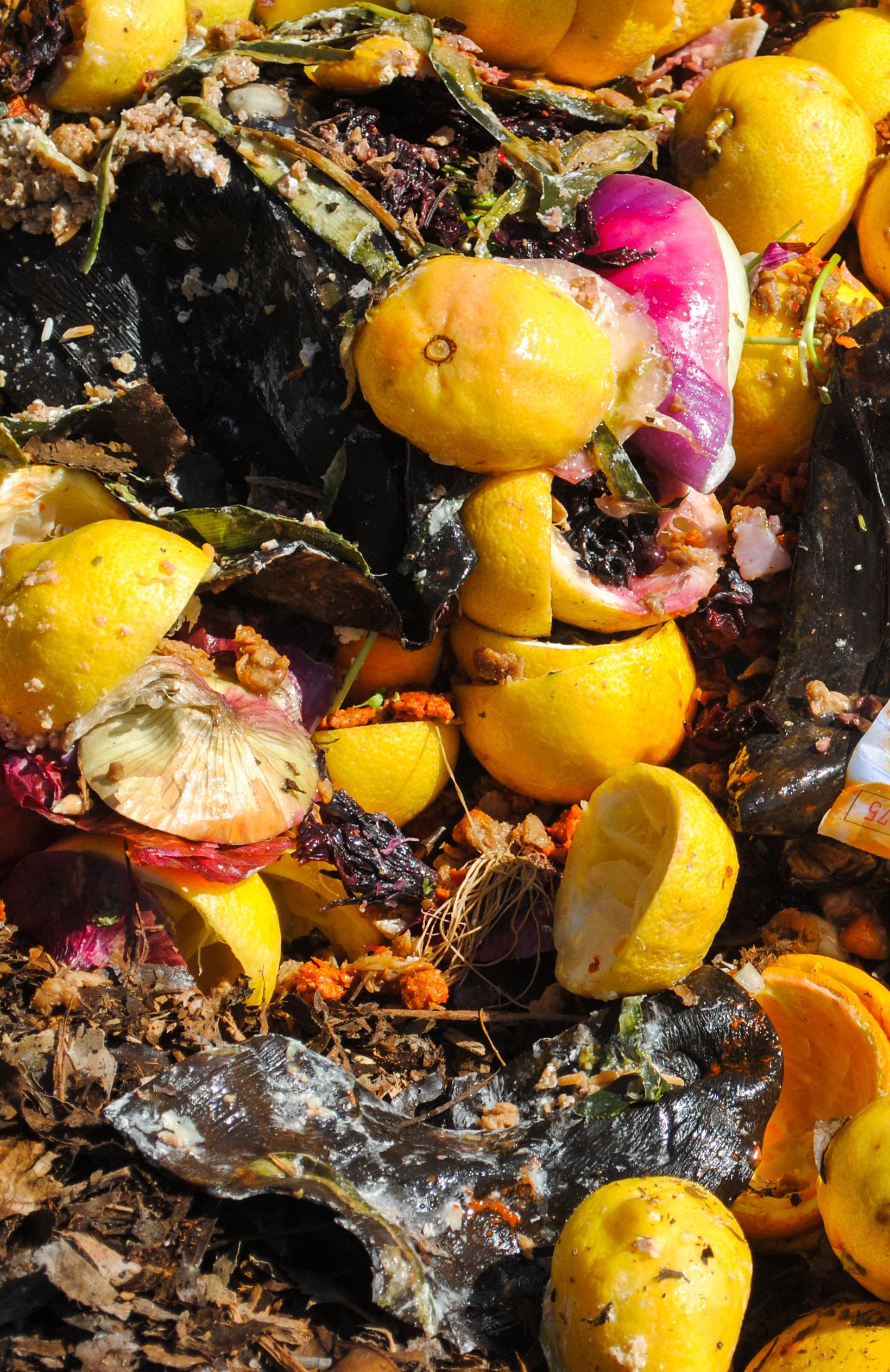

a space where people are constantly dehumanized and not supported in a way they need to be supported. So for a while, there was only one strong person leading that week after week, with whoever showed up, and over time it just wasn’t sustainable.
So now we have it Sundays broken down with food collection from 9:00 to 10:30am, then we compost at Lopez Urban Farm until about 1:00pm, then the community cooks bring the food to us at Lopez, we prepare the food distribution and community outreach trailer, and then we leave from there.
[interview audio drowned out by strong winds for almost 2 minutes; two salvaged blood oranges were opened and shared during this time as Eleanor explained how their street outreach efforts have been challenged by law enforcement’s increased policing and harassment of unhoused individuals, due to recent policy changes put forth by the City of Pomona.]
Eleanor: What else… We used to run a monthly Learn-How-To-Fix-Your-Bike workshop at the Pomona Farmers Market with these two [Ellie and Drew] as the strong leads on that. Drew finally gave up his non-value-aligned office jobs to take a job as a bike mechanic and unfortunately they schedule him on Saturdays, so that part of our work is dormant at the moment; one day to be reborn as a bike co-op alongside the community grocery store.
Hopefully that will come into being in the next year to two years. We are in conversation with a building owner about the development of that project. So if the stars align and the funding comes through, hopefully there’ll be a community-oriented, open-7-days-a-week co-op grocery store that’s providing refrigeration for these small growing spaces and also making that food more accessible to the community much
more than a farmers market can.
Another thing we’ve talked about but doesn’t exist yet, but intersects the street outreach and food cycling, is that we see the things we do involve skills that community members that live in the streets may already have. Whether that’s: fixing bikes, recycling, upcycling or fixing things, composting, growing and harvesting. So I think as we grow into something more solid, through the relationships we’ve cultivated with people who’ve been living in the streets long term, it would be amazing to create opportunities for them to contribute with the knowledge that they have through actions that are aligned with what our collective is doing. It’s all synergistic.
Rebecca: What would you say is the easiest way for someone who has no idea about the project to start taking a step to either supporting Food Cycle Collective or increasing their own sustainability?
Drew: One way that I feel is really approachable is showing up to just the composting part of Sunday. Like, you don’t have to ride a bike. You can just go and see how it’s done. The garden is there and you can walk around and see that the community is growing food for the community. For me, that was really powerful. I didn’t really know what the ride was going to be like when I first came. A year and a half later I’m still doing it… and I hope to be doing it in another 10 years.
But yeah to me, showing up to the composting is the most accessible first step. You can get there however you get there. Bike or no bike. You can just get there and learn how to compost, reduce your waste, create new soil, etc. And if you like it, there are so many more places where it’s happening multiple times a week, and a lot more in LA and other spots too.
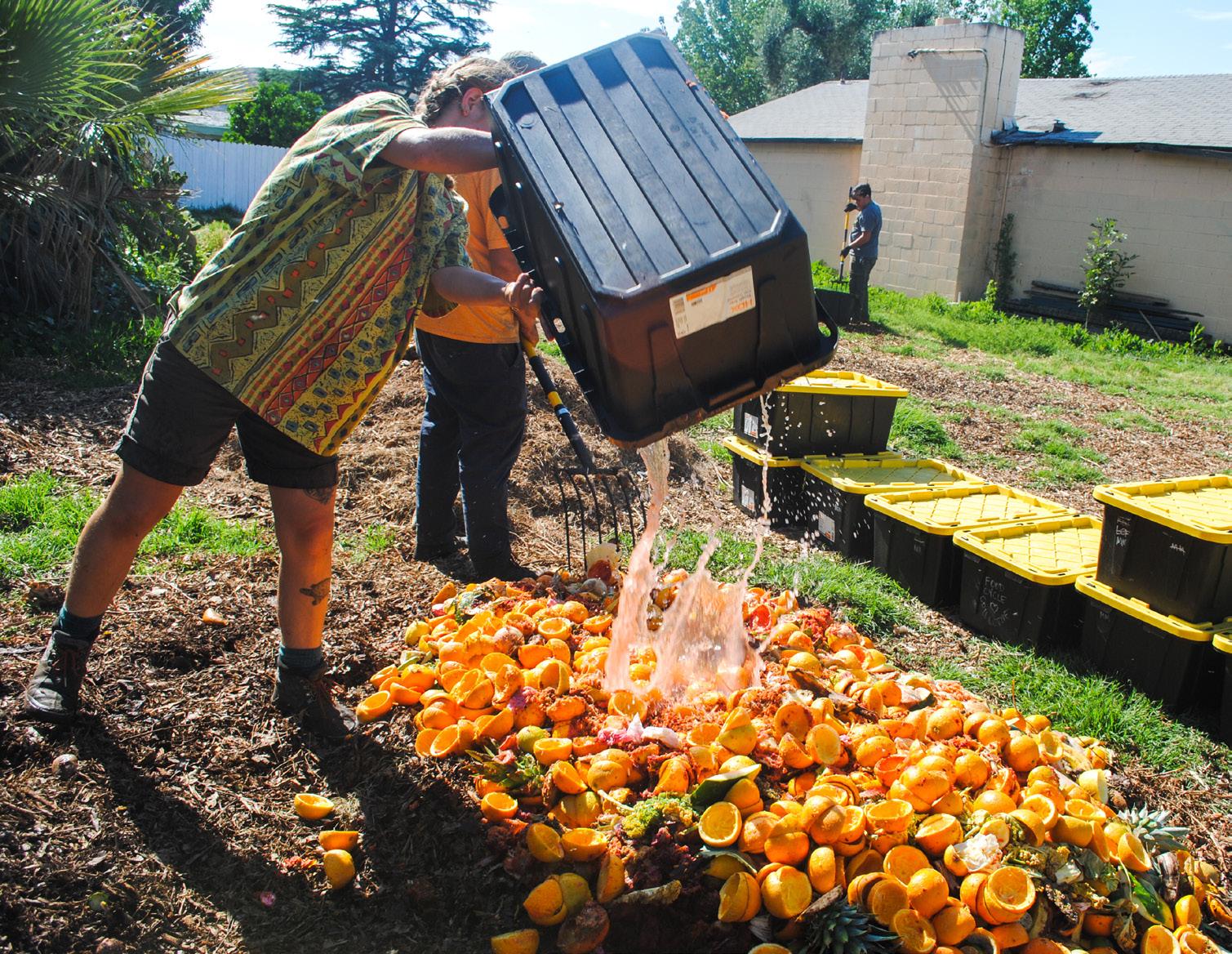

Eleanor: One thing for me, is this whole oppressor culture that is trying to convince you that you don’t have any power.
And to keep you at home, in front of your TV, eating junk food, quiet, submissive, doing nothing. And I would say that the Food Cycle Collective is an example of how with very little infrastructure and resources, a couple people can get together and start making some impactful change.
And there’s really important kinds of change that need to happen in our culture. The way I look at it, when we act good and we care, we can really start to shift some of that oppressor culture out of our lives. Just showing up, getting the support you need (which might just be getting one friend to commit to going with you) and just believe that you actually can make an impact on the community. Get creative… have fun!
Lead with your relationships. Lean into your relationships, build relationships. It takes the courage to do something and to believe that you can impact the community.
It takes compassion for other people and for the world that we live in, and I think creative problem solving is a really important way of making change. Try to do something that’s different from what hasn’t been working.
Drew: I definitely like the ‘Have Fun’ part, because like, we play Fruit Ninja in real life sometimes. We have a machete, and it’s a lot of fun haha.
Rebecca: I think for a lot of people, it’s really daunting - “having purpose”, “helping your community” - preachy. I mean, that’s part of it, it can be. But don’t you want to be in nature with your friends and fuck around, eat some good stuff. Also get a free work out-
Drew: I don’t think gyms should exist haha.
Eleanor: And it’s true, one of the things that’s really beautiful about what we’re doing is that real friendships emerge and deepen, and that just happens without you realizing it. And you suddenly realize - like dang, I have people that if I’m in trouble, I can call and they would show up for me. And that comes from spending time together, experiencing joy together, trying to make change together.
Rebecca: That made me feel good. Haha.
Sam: Mmhm.
Rebecca: Thank you, thank you so much. <3
Ellie: I looked up our weekly average for the past four weeks has been 4,099 pounds each week.
Sam: What?
Eleanor: Yeah, so almost 5,000 pounds a week.
Rebecca: Fuck!
Sam: That just sounds crazy. And you move all that on bikes?
Eleanor, Ellie, & Drew: Most of it, hahaha. In batches.
Eleanor: We have a couple people that self-haul to our compost sites.
Drew: Yeah, like the brewery. They drop it off to us.
Sam: Oh, that’s smart. Very cool.
Rebecca: That’s probably where a lot of it comes from.
Drew: It’s heavy.
Eleanor: Mm, yeah… they usually bring like 600 pounds a week.
Drew: And it depends too. Last week we had two pallets of grapes from the food pantry.
Eleanor: The food pantry can be pretty inconsistent, we also got a pallet of jackfruit.
Sam & Rebecca: Woah.
Drew: We were able to salvage 50 boxes of grapes and passed those out to people… people loved those.
Eleanor: We salvaged about 20 jackfruit. That was quite an effort, haha. We try to do food rescue when we can.
One thing I was gonna tell you was that, within our community composting for green spaces, our goal for this particular for our collective’s [food waste] diversion is about 9,000 pounds a week, so we’re not quite hitting our numbers. But we are working on a partnership with Stater Bros.
And we don’t know whether it’s gonna come through, but we want to demonstrate that small organizations and big organizations can actually work together. That it’s not true that big organizations can only work with big, industrial composters.
And by actually having more localized partnerships, we can help large organizations be more rooted in the communities that are directly surrounding their stores. Facilitating greater food rescue, facilitating more support of community composting, and facilitating local food security.
We like to elevate that narrative when
pushing for our collaborations. So if that [partnership with Stater Bros.] comes through, I’m sure we’ll start hitting our numbers.
Sam: Sweet.
Rebecca: Fuck yeah. I have a good feeling about it… Wow. Thank you so much for your willingness to candidly pick up conversation about all this. Hopefully we weren’t interrupting your work too much either-
Eleanor & Drew: Oh no, not at all. We’re about to start [composting], so stick around if you want to take some pictures…
Rebecca: We’ll definitely take you up on that produce if you’re still.. Haha
Eleanor: Oh yeah! We have cilantro that’s ready. I think we have radishes that are getting to be over-ready.
Ellie: We definitely have kale.
Drew: Fennel.
Rebecca: Oooh. Yeah, we use all of that.
Eleanor: We’re gonna finish weighing in; so we’ve weighed about half of our stuff.
We’re gonna weigh these in, so you can just see our process. And then we’ll weigh some wood chips, lay down the wood chip bed, and throw some food scraps on there. That’s definitely a fun time to take pictures; when the colors start coming out and you have like this mish-mash of fruits, juice, pulp, and… muck, haha.
And we’ll be at that fun, eye-candy part in like 15 minutes.
GUIDE:
Esperanza Community Farm
1786 Denison St, Pomona
(IG: @esperanzacommunityfarm
Lopez Urban Farm
1034 W. Mission Blvd, Pomona
(IG: @lopezurbanfarm)
Buena Vista Community Garden
1191 Buena Vista Ave, Pomona
(IG: @buenavistacommunitygarden















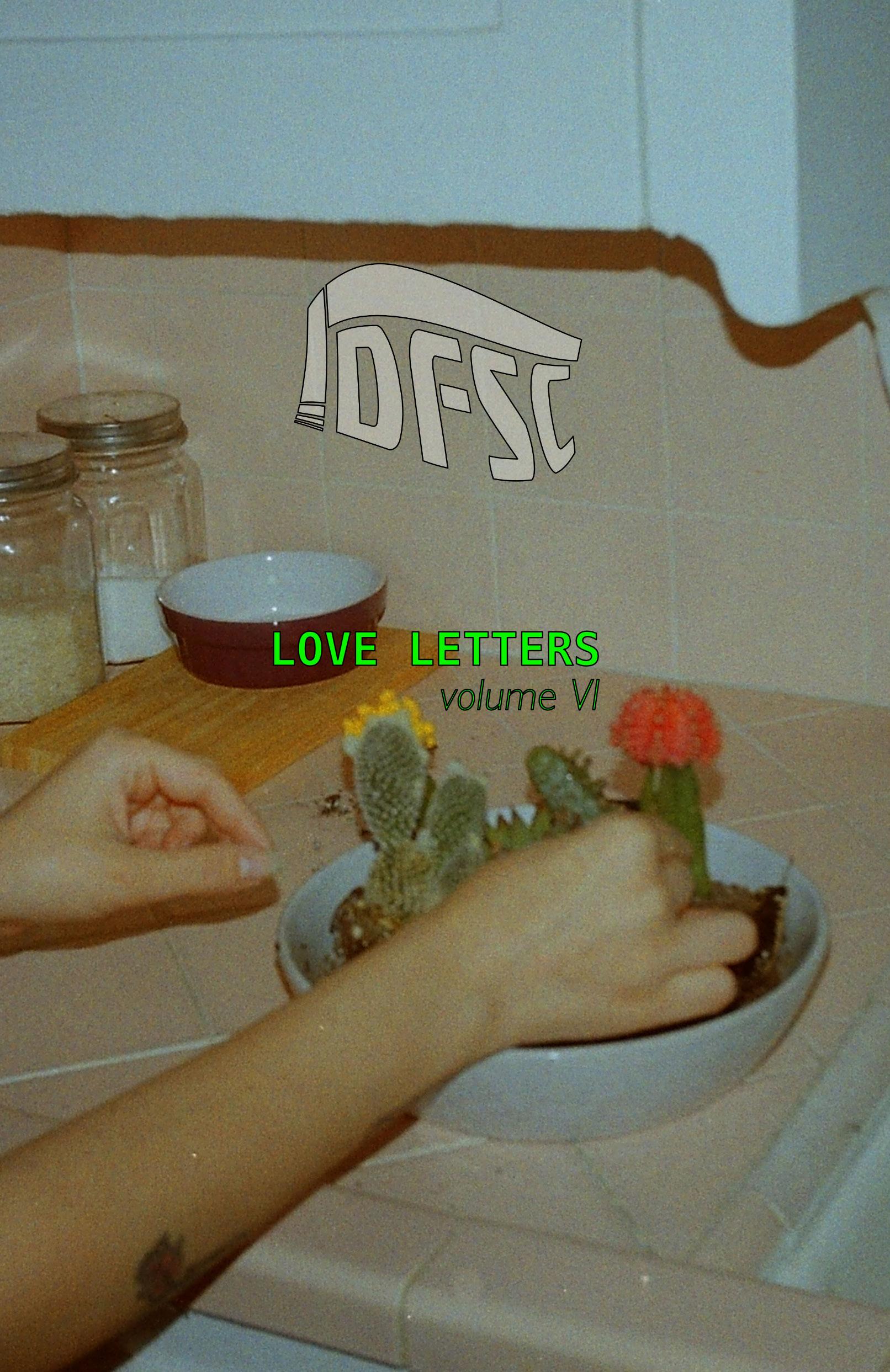


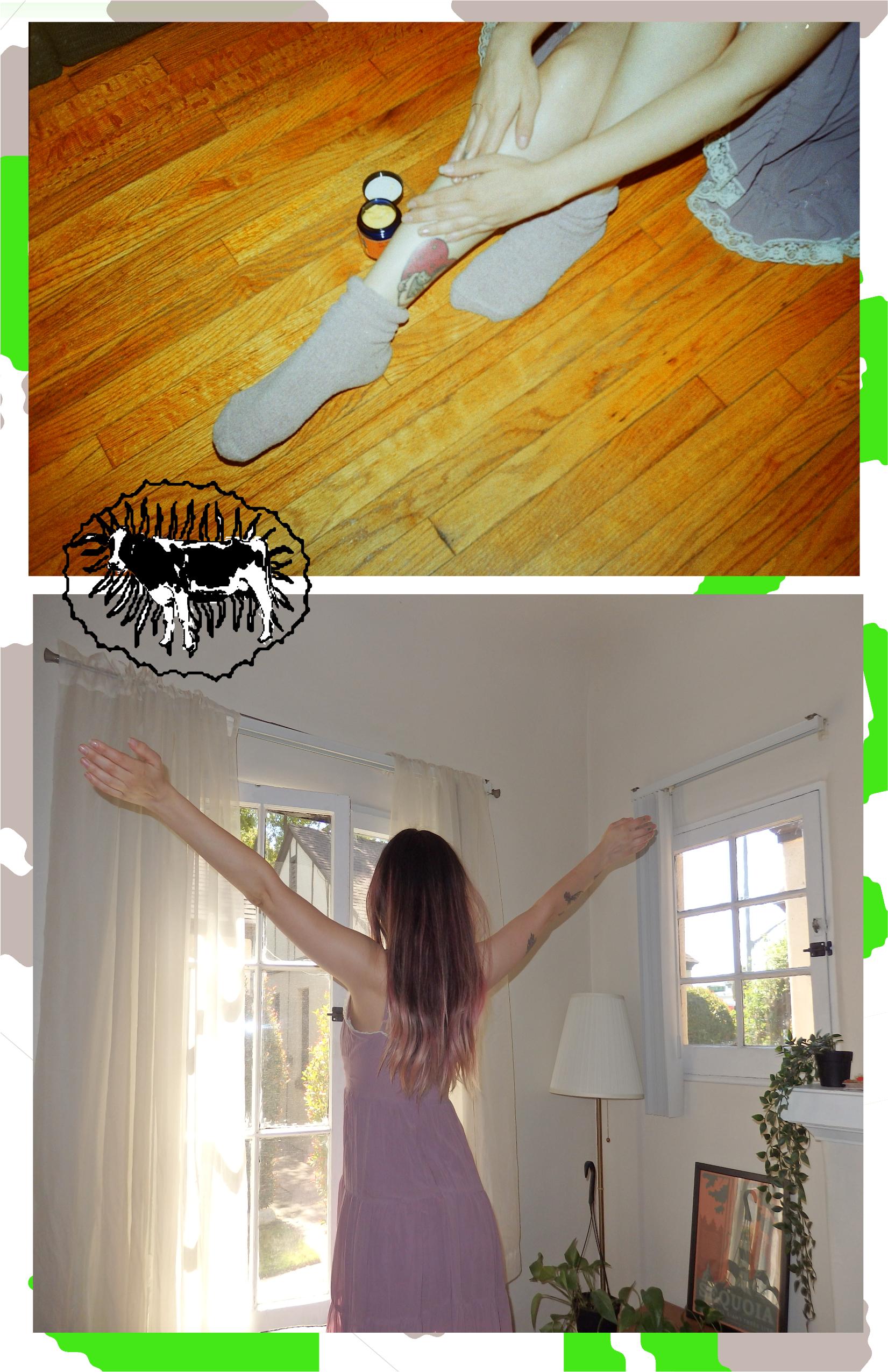


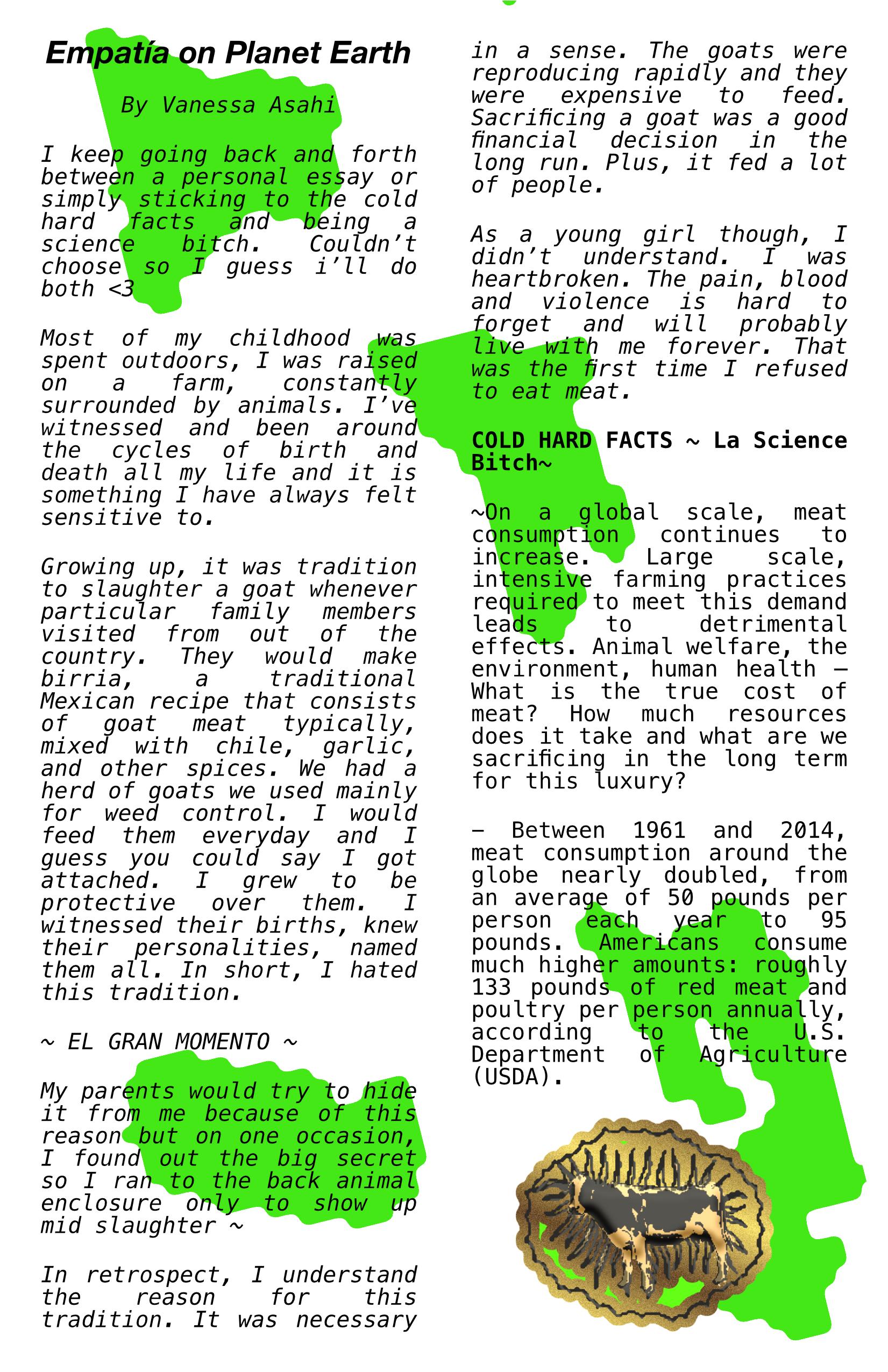














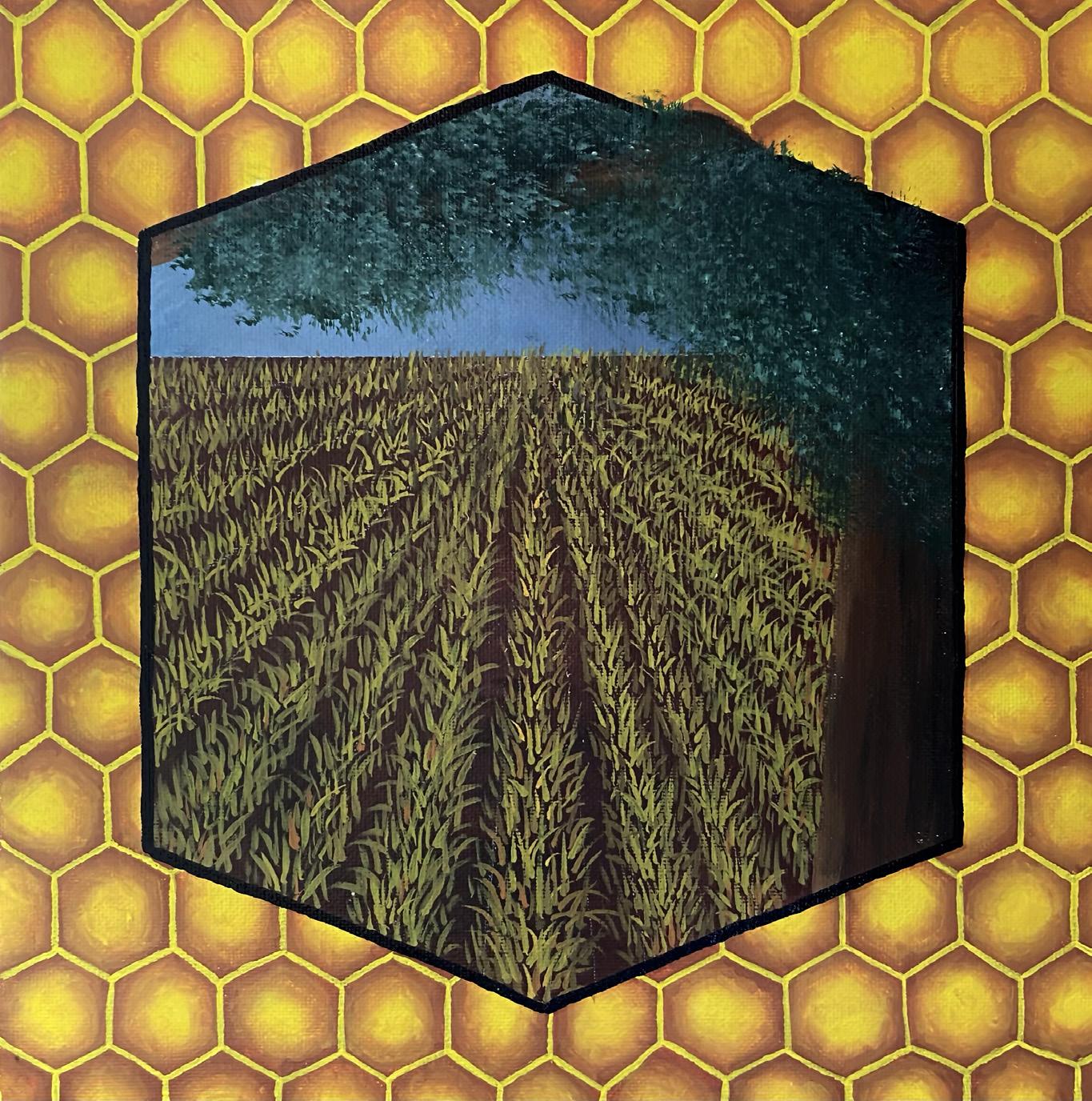 MELANIE WALDEN
MELANIE WALDEN


 DENISE SILVA
DENISE SILVA

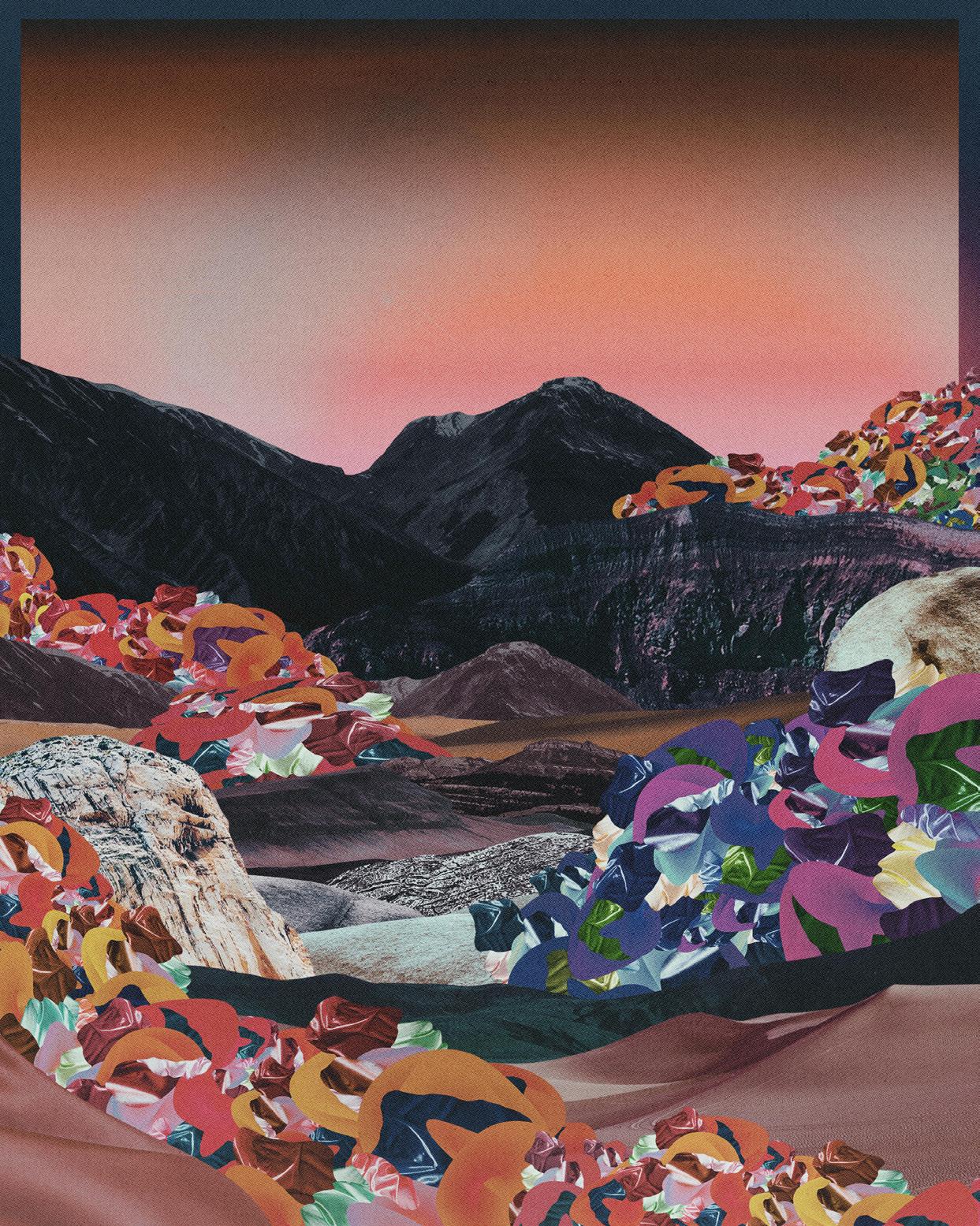

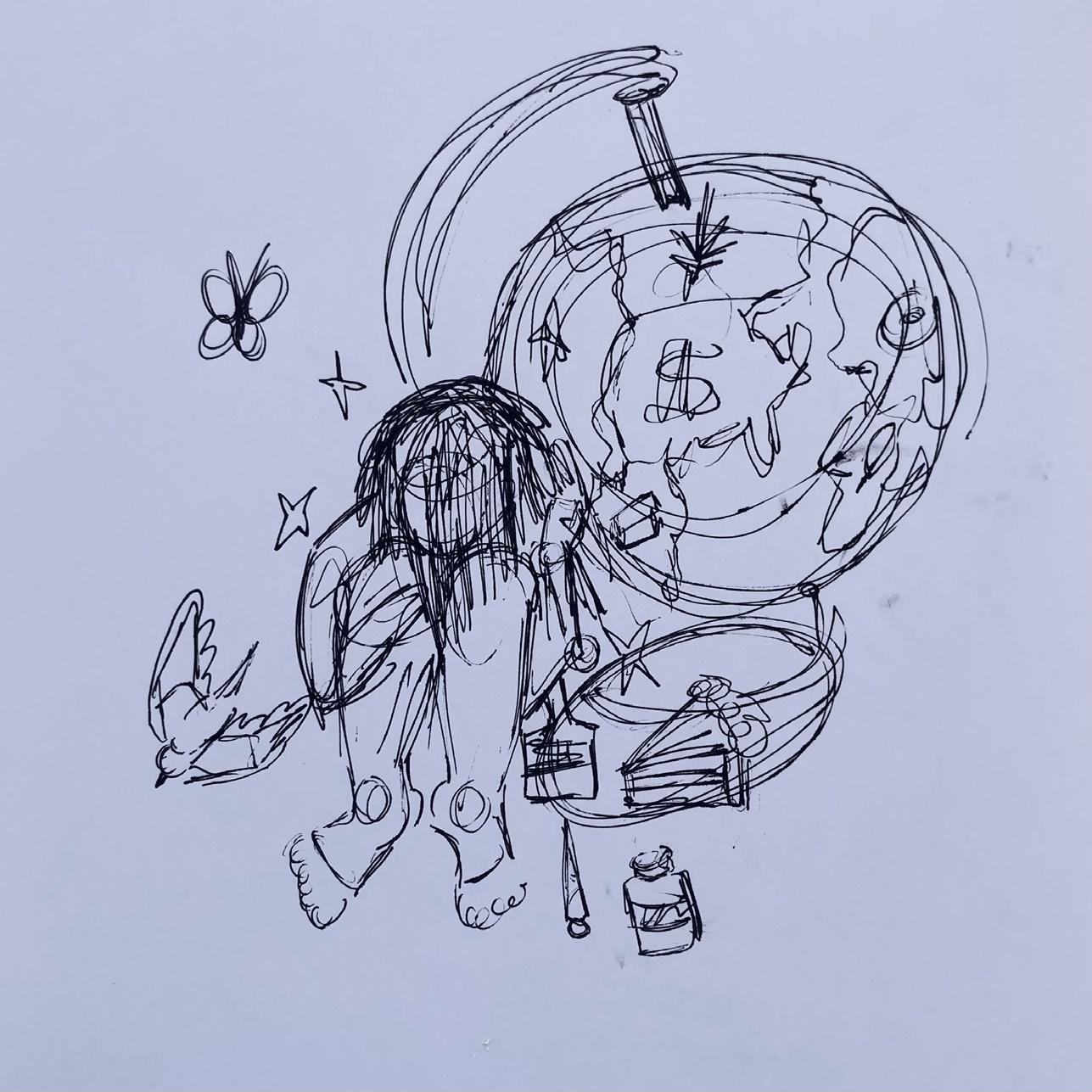

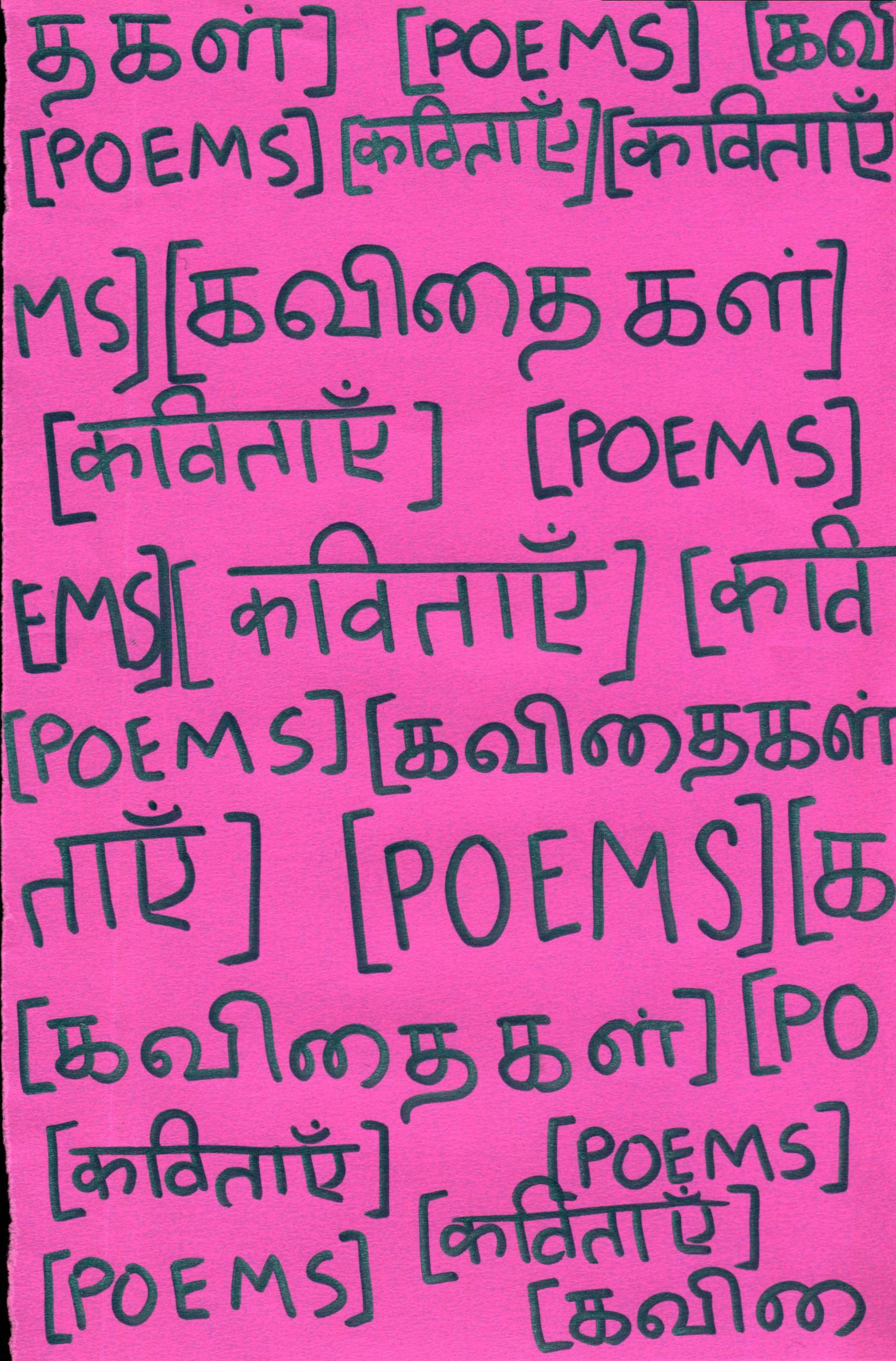
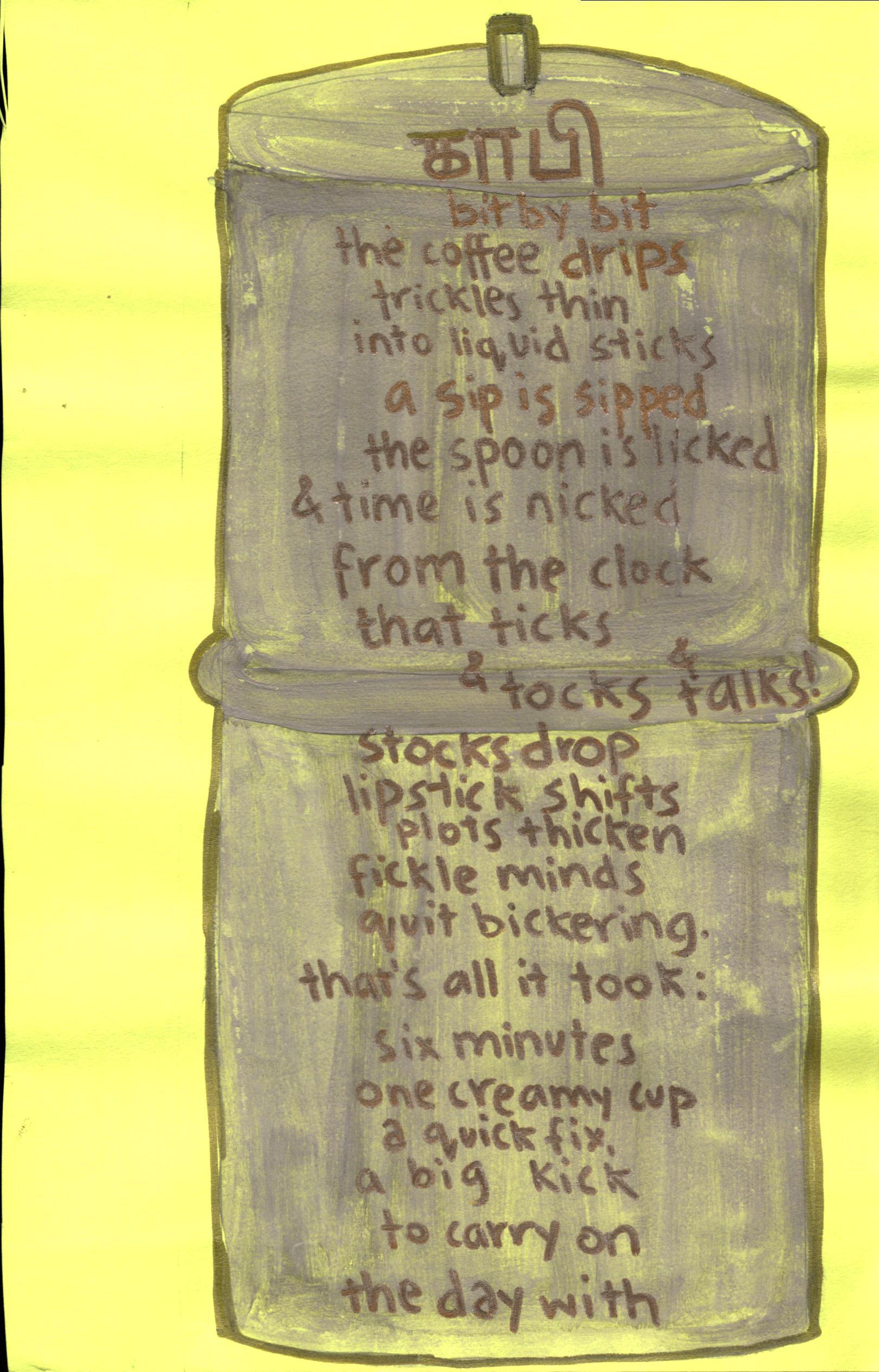

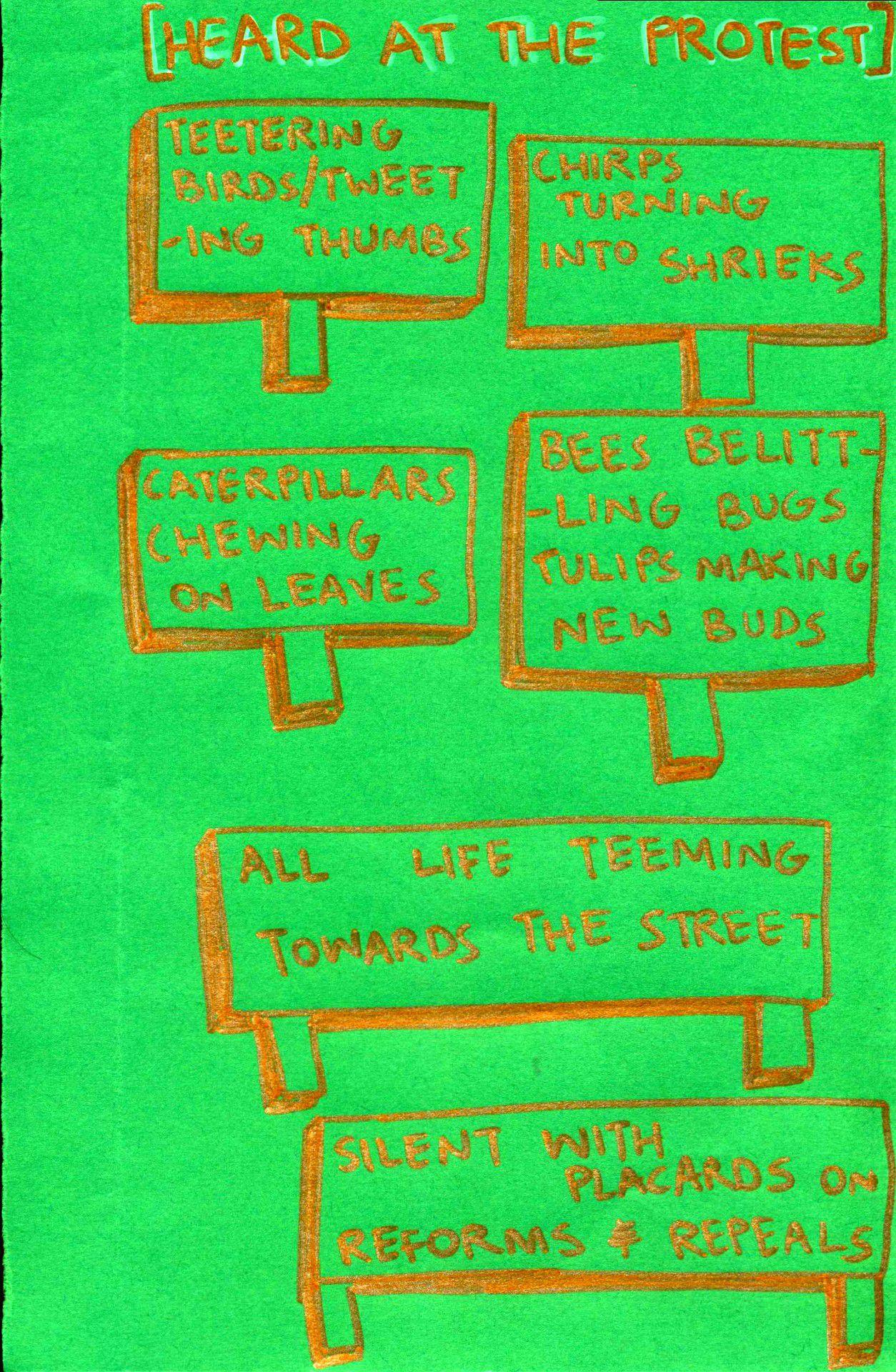
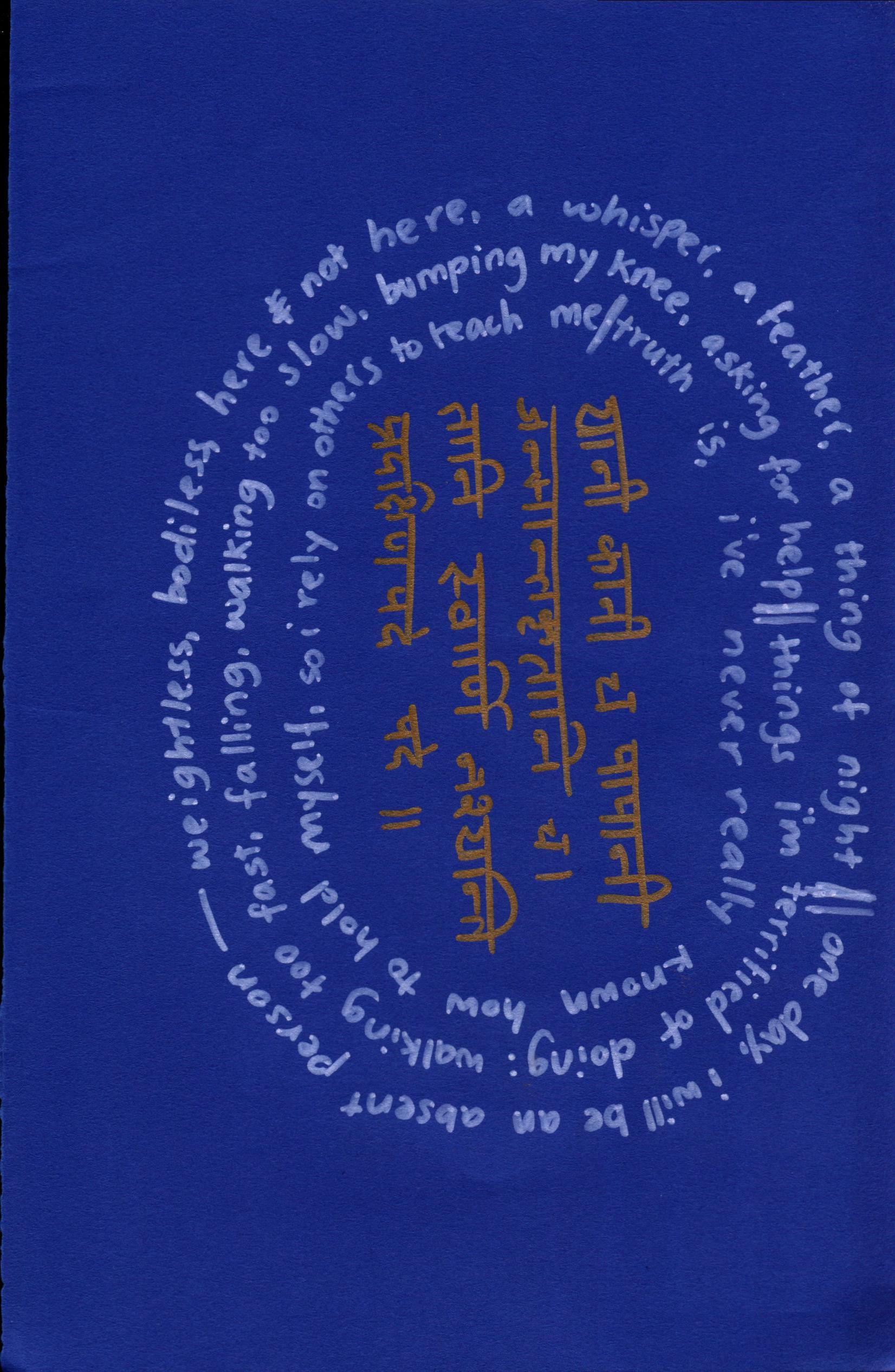




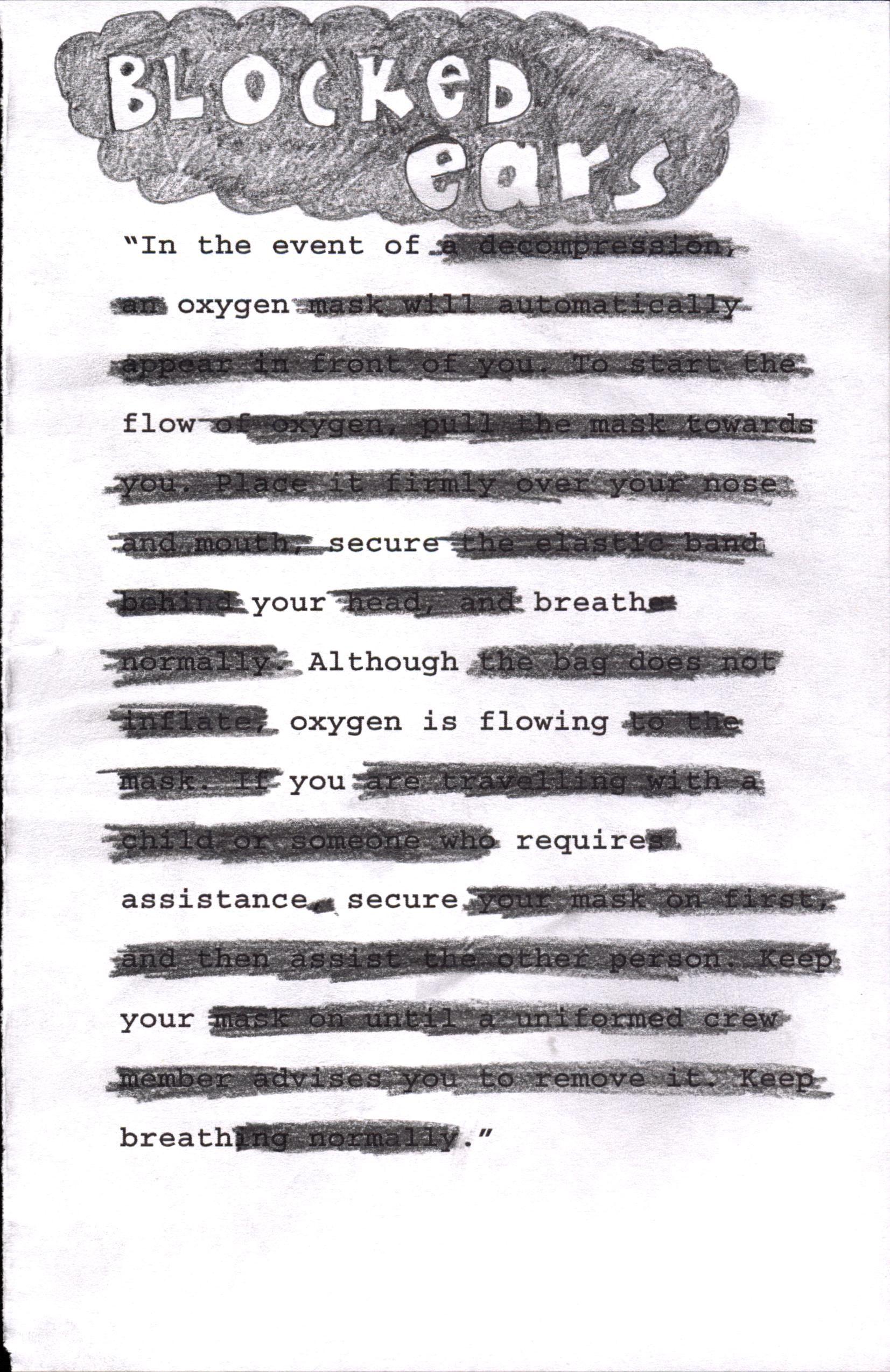

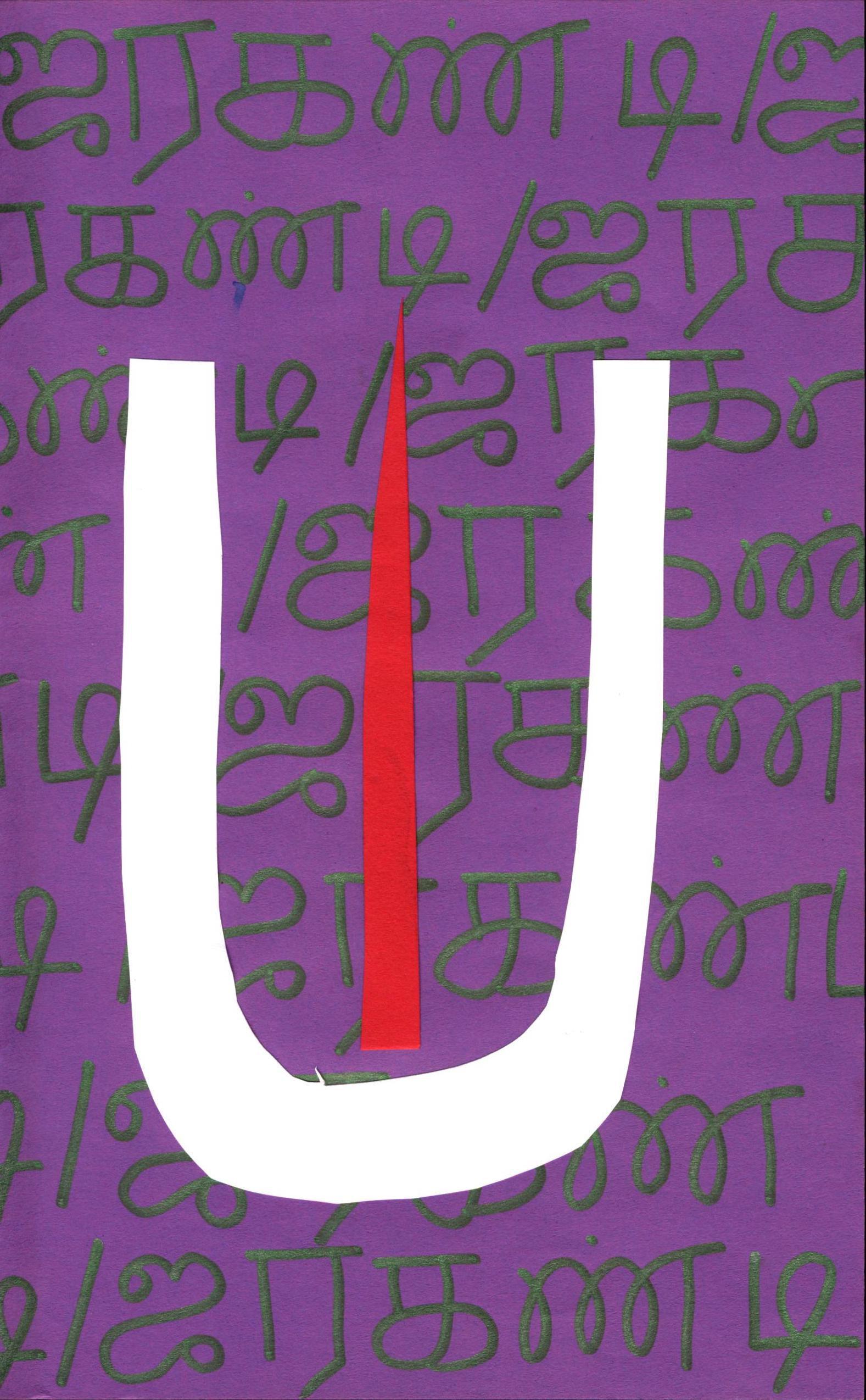
 1. Semente, photograph
1. Semente, photograph
 2. Hope, photograph
2. Hope, photograph
 1. 2016, Digital collage of photograph
1. 2016, Digital collage of photograph
 2. People of the Green Planet, Digital collage of photograph
2. People of the Green Planet, Digital collage of photograph
 3. Amalthea (Moon of Jupiter), Digital collage of photograph
3. Amalthea (Moon of Jupiter), Digital collage of photograph
 4. Cosmic dust, Digital collage of photograph
4. Cosmic dust, Digital collage of photograph
 5. guardian angels do not fall from the sky, Digital collage of photograph
5. guardian angels do not fall from the sky, Digital collage of photograph


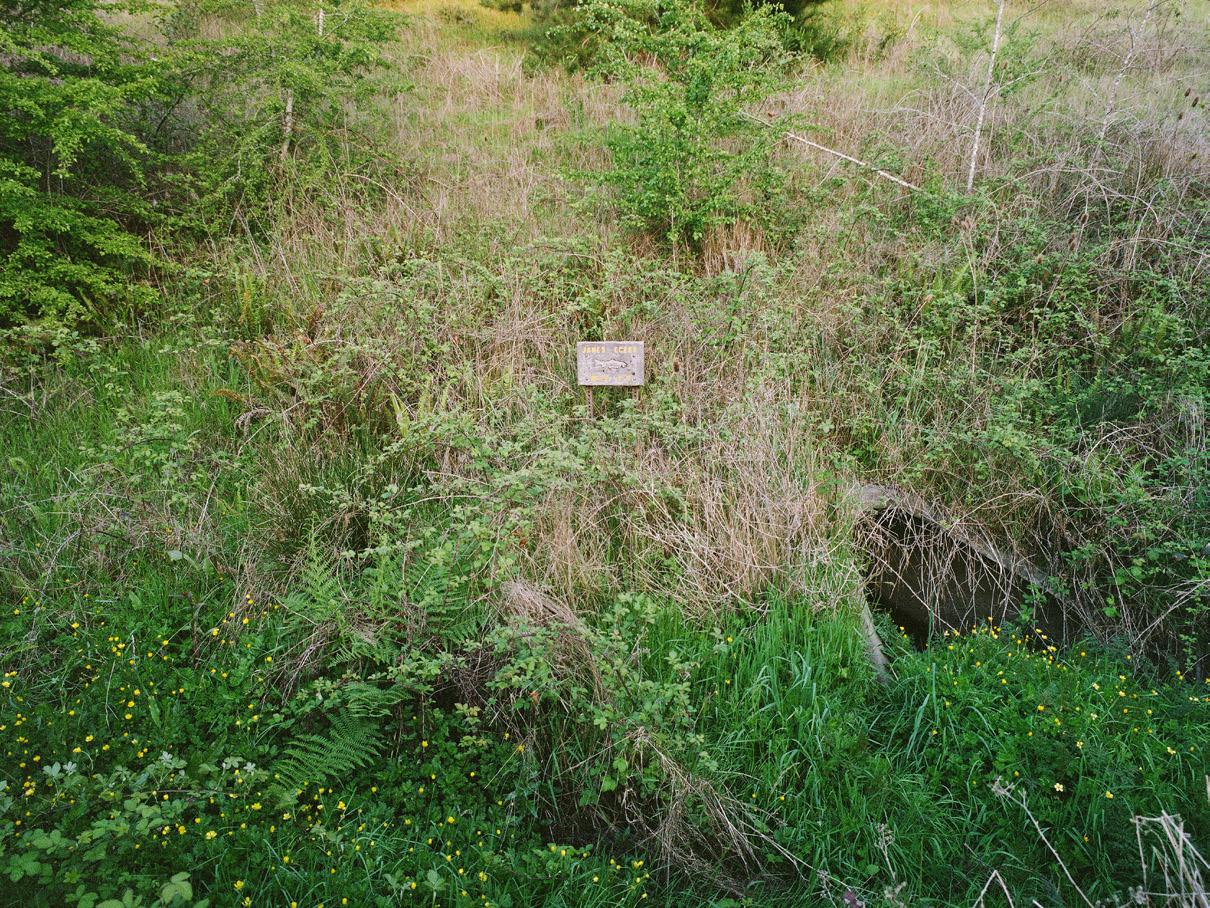
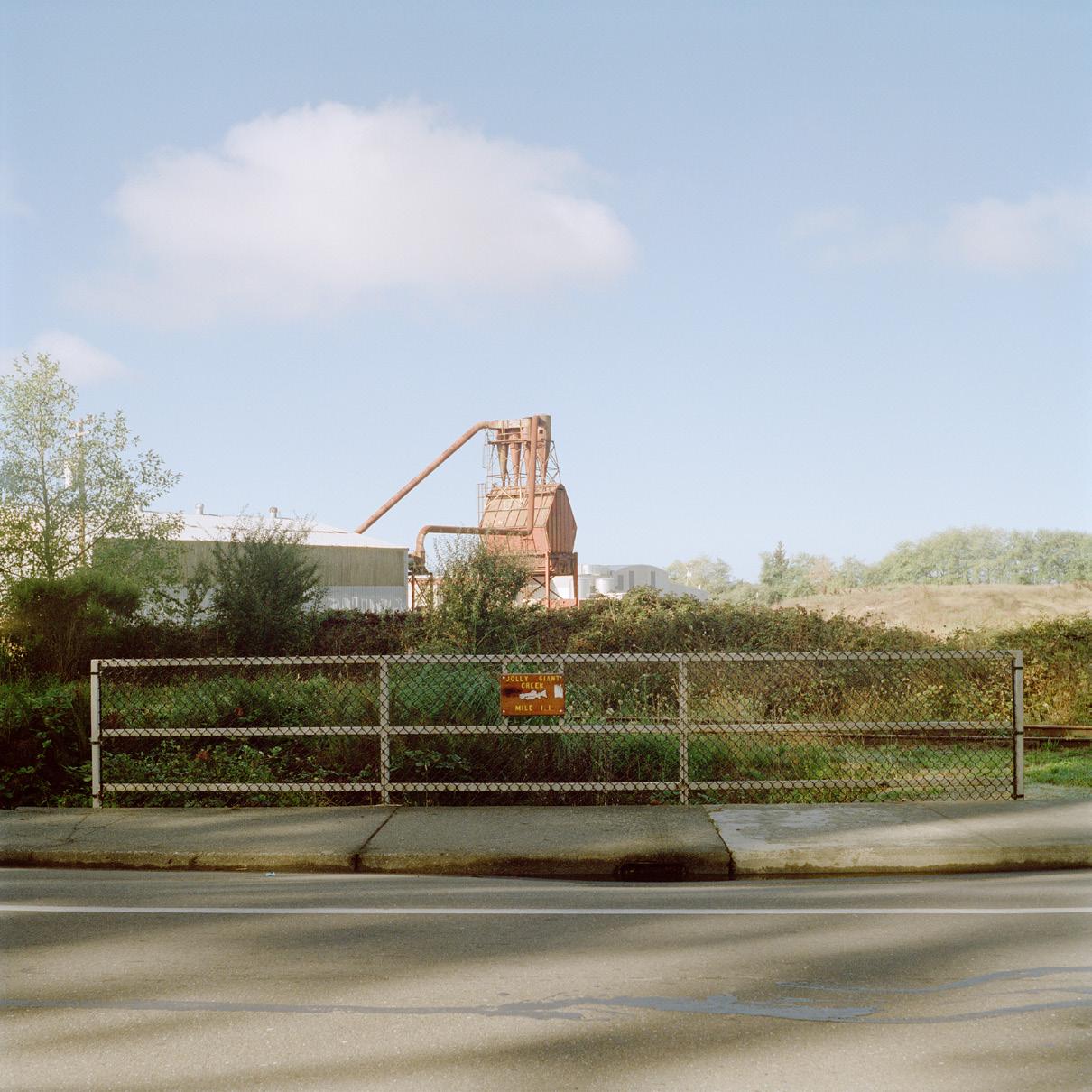 Janes Creek Mile 2.9
Jolly Giant Creek Mile 1.1
Janes Creek Mile 2.9
Jolly Giant Creek Mile 1.1

 Campbell Creek Mile 1.9
Campbell Creek Mile 1.9
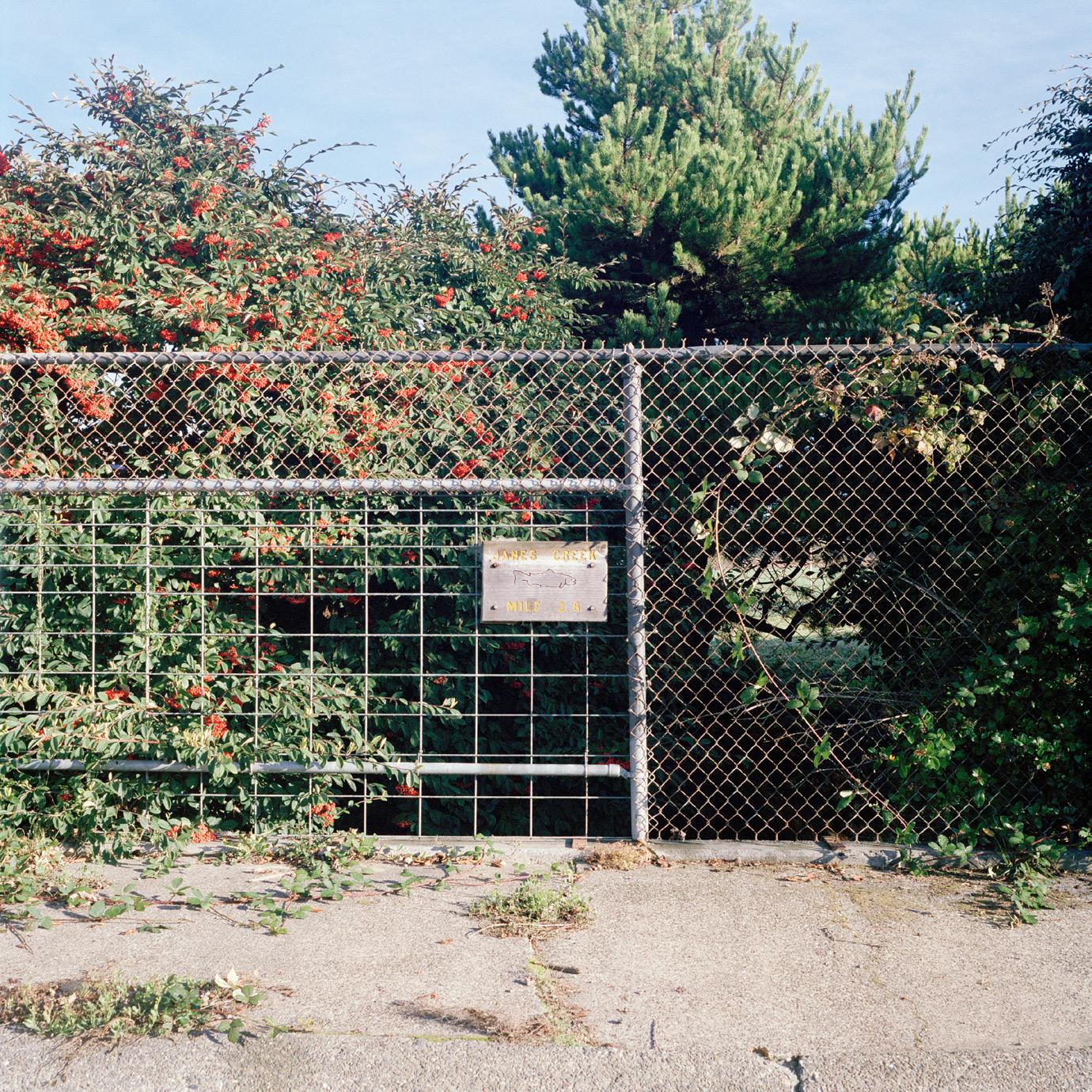
 KATE TATSUMI @katetatsumi
KATE TATSUMI @katetatsumi
 LUCINDA JOLLY
LUCINDA JOLLY





